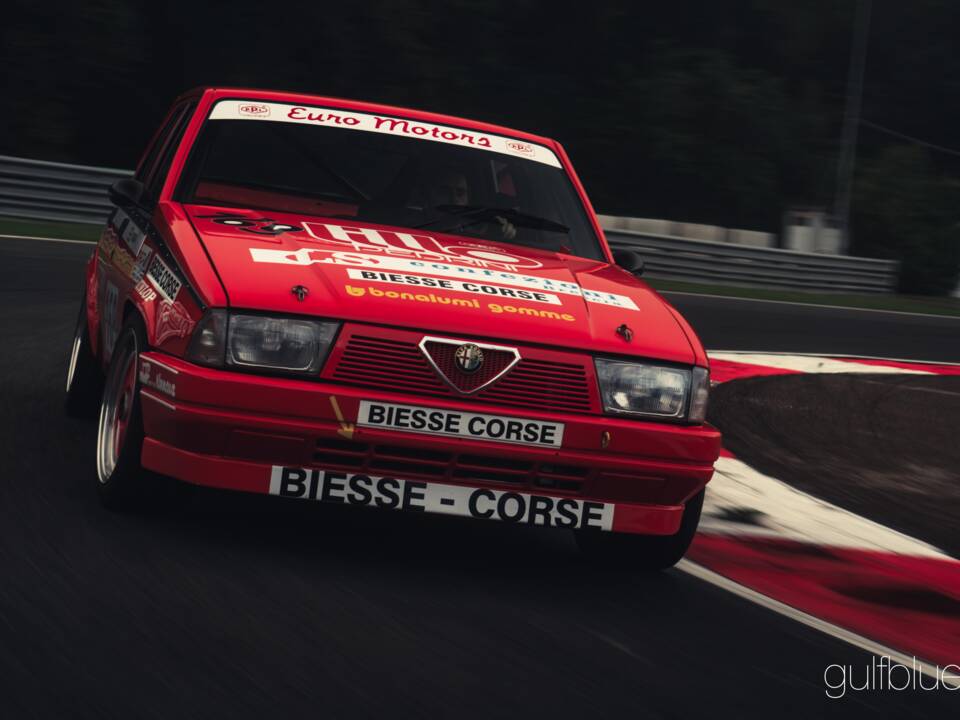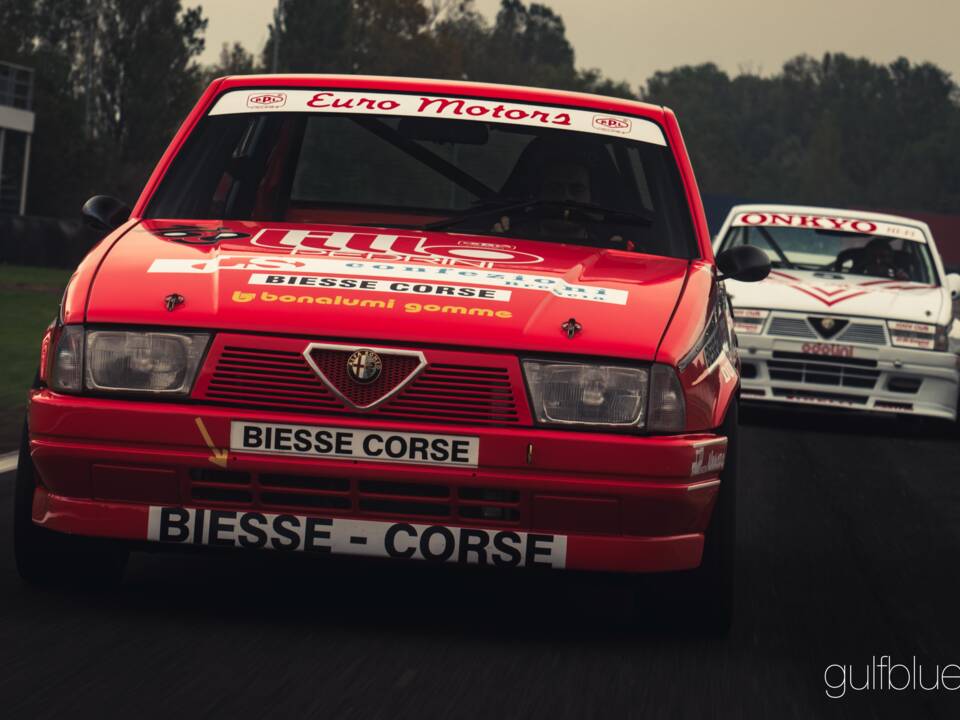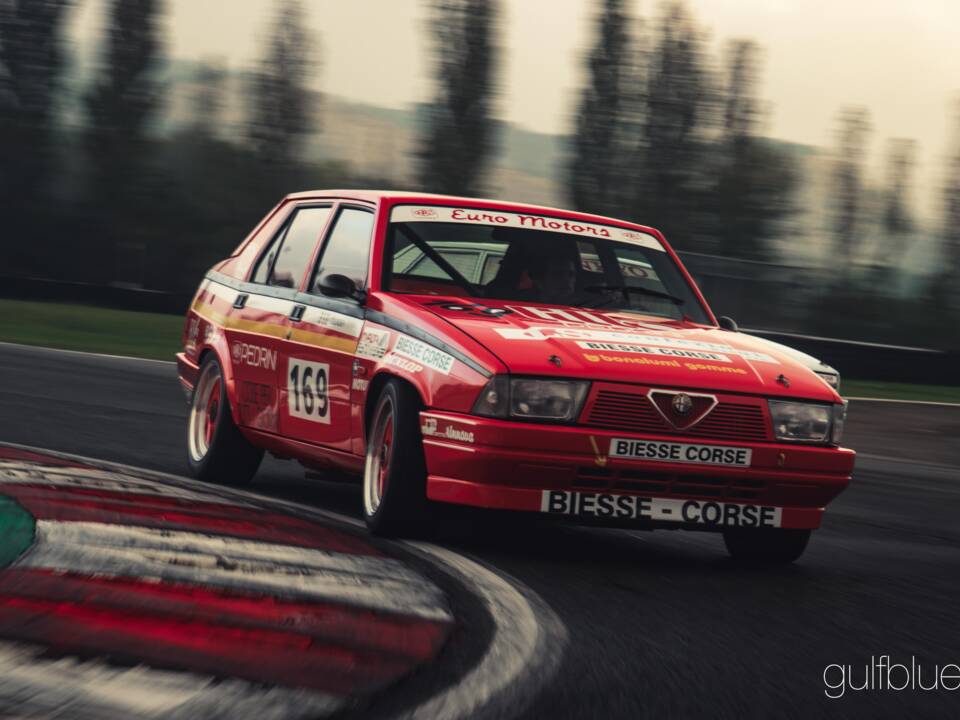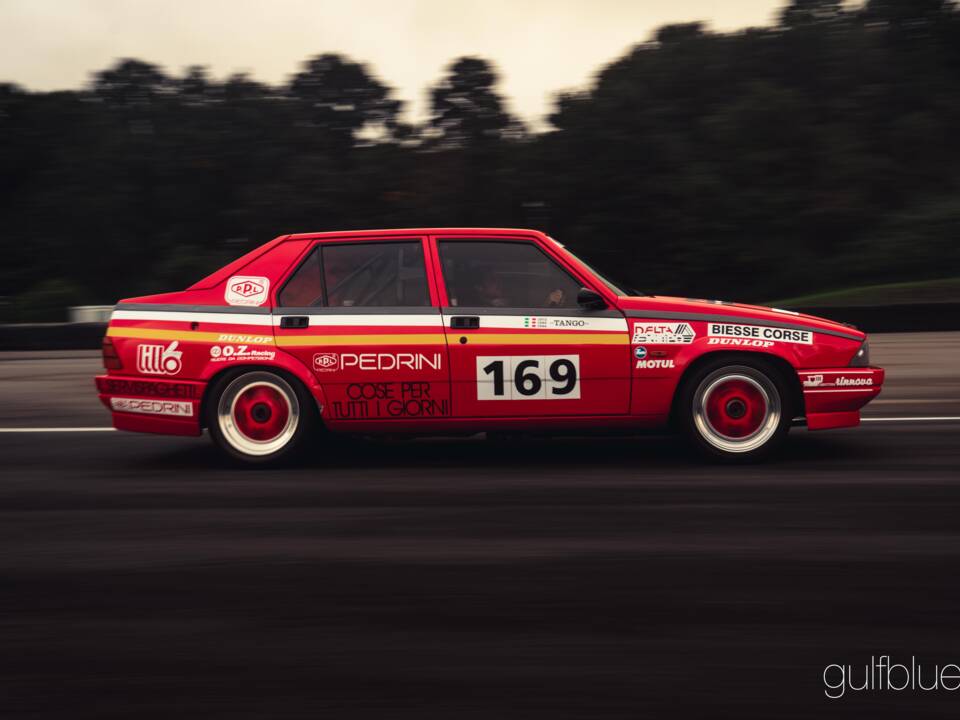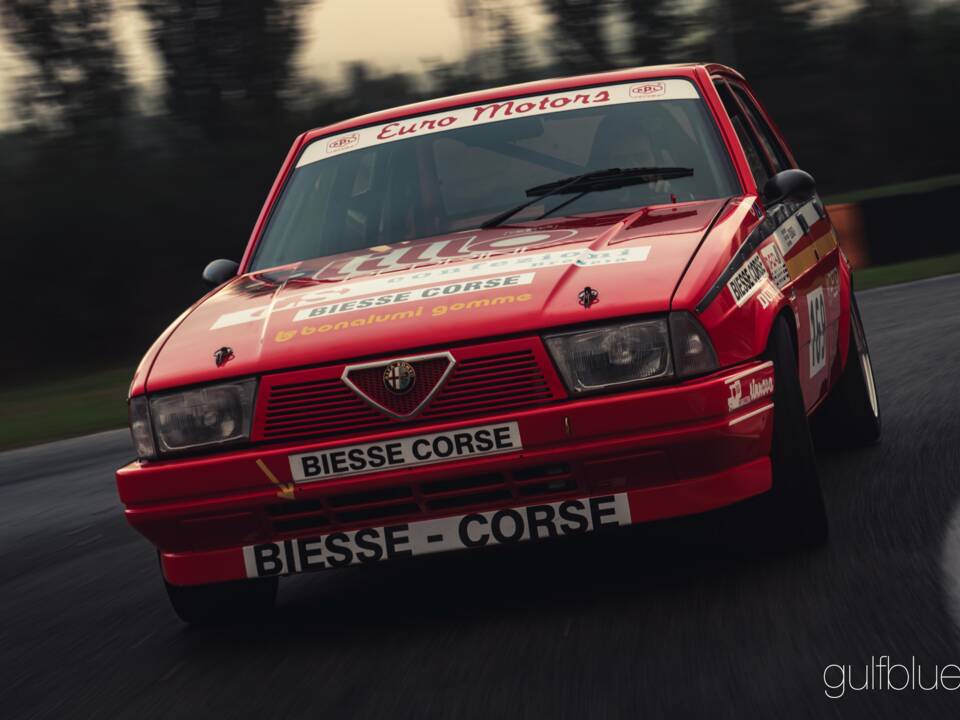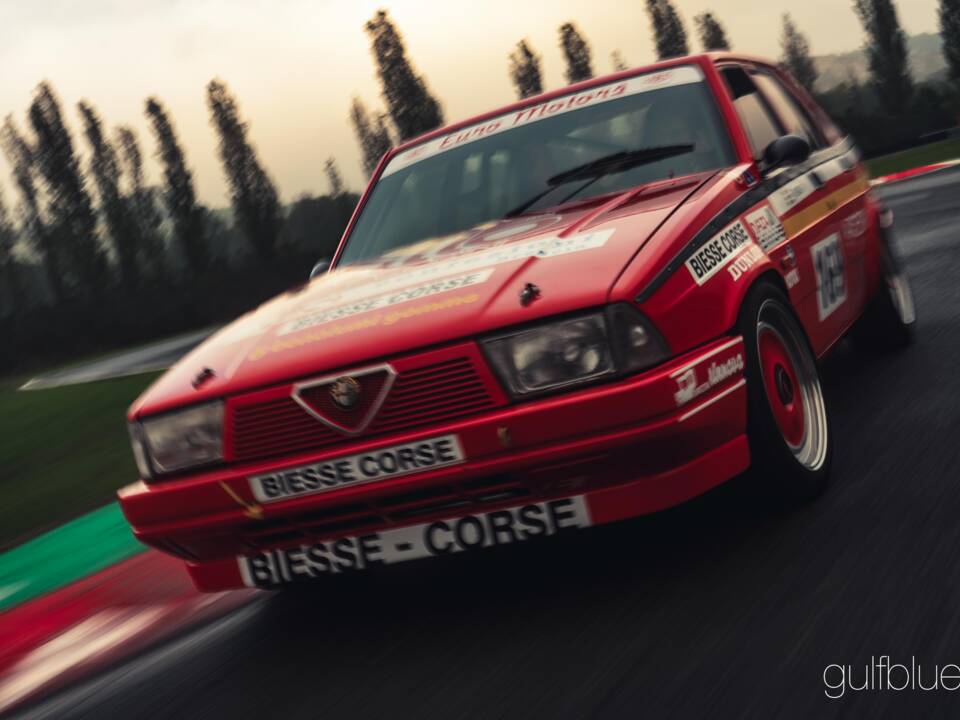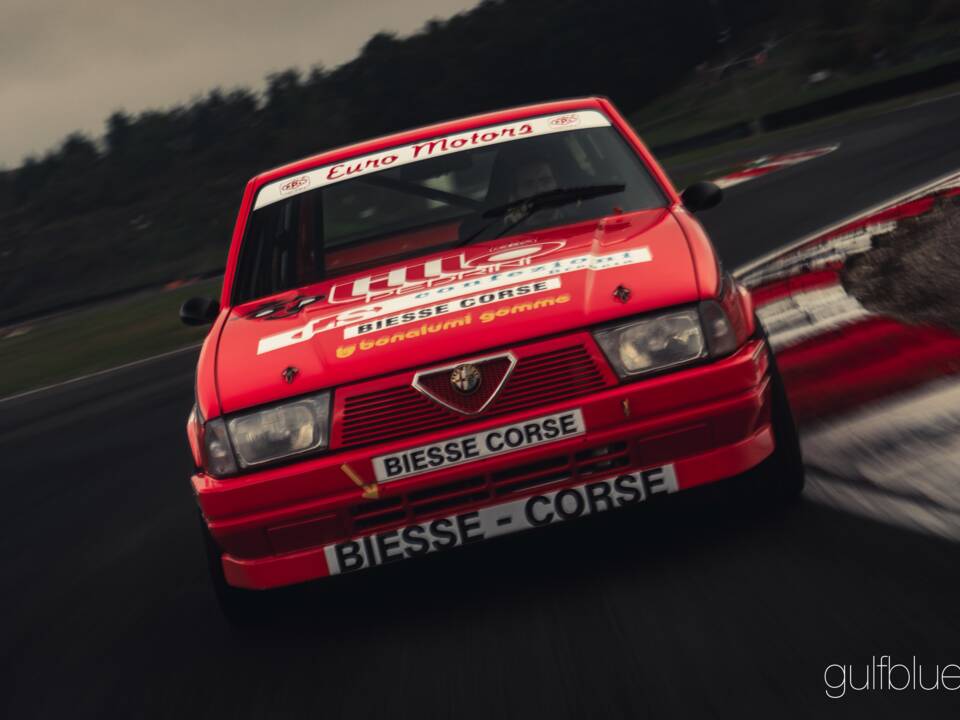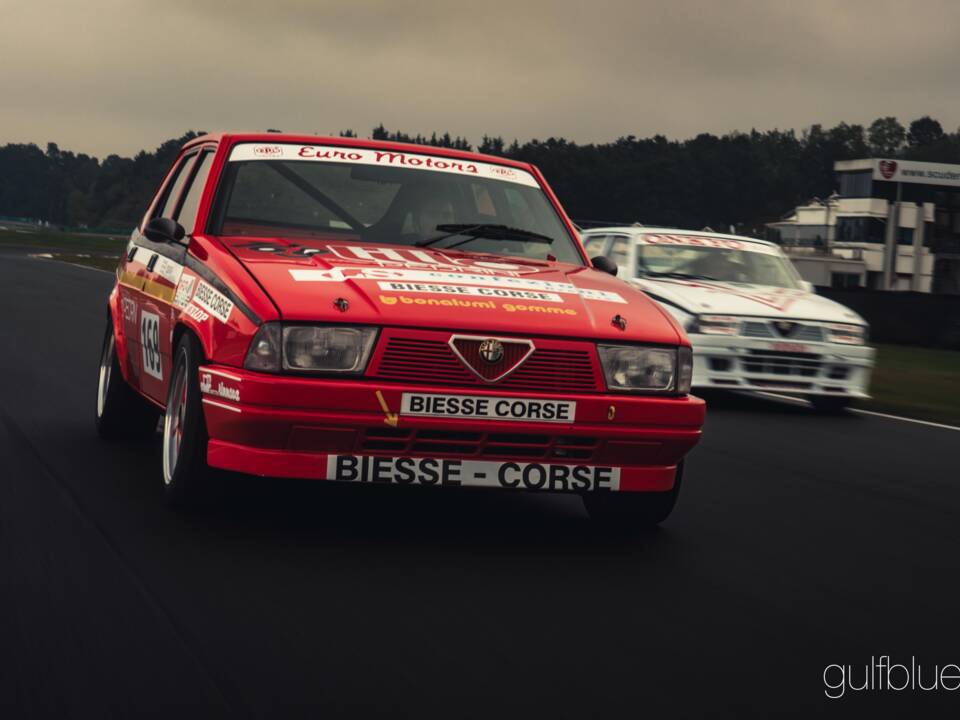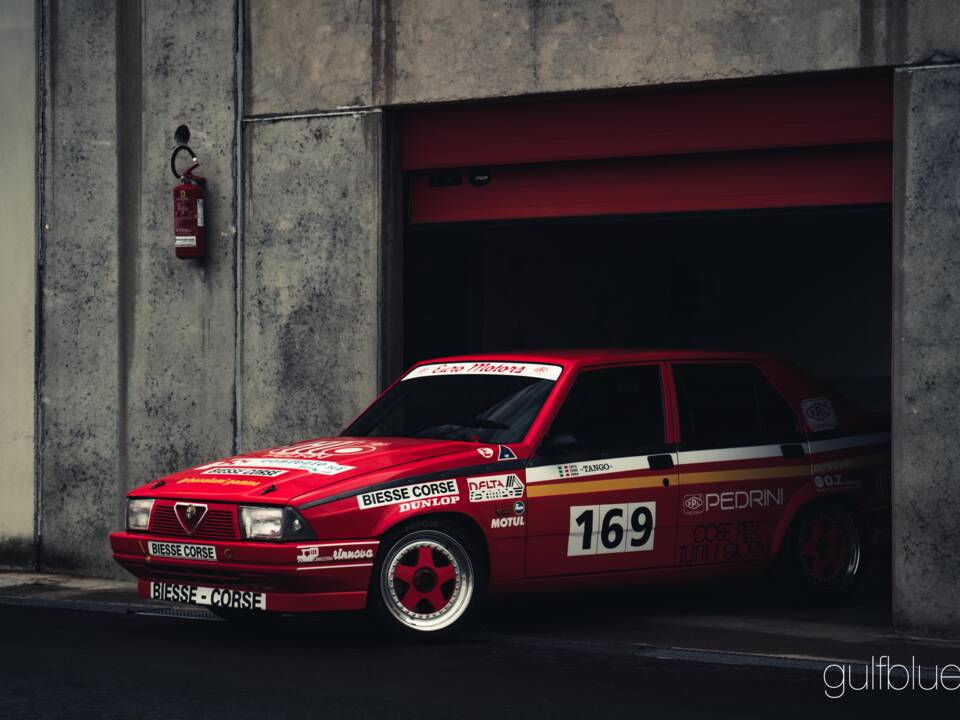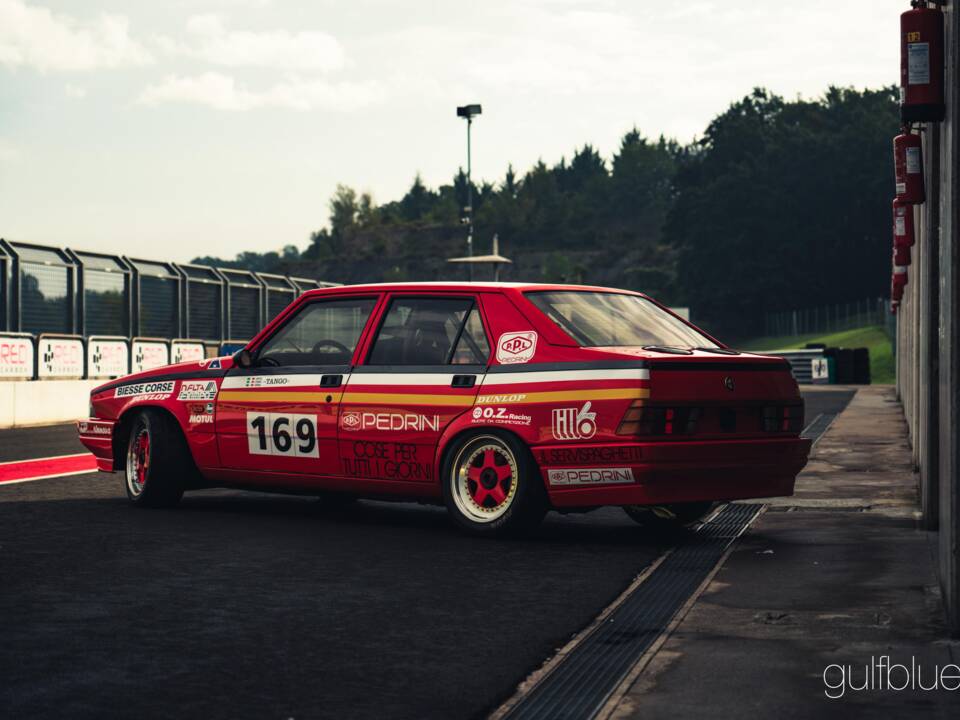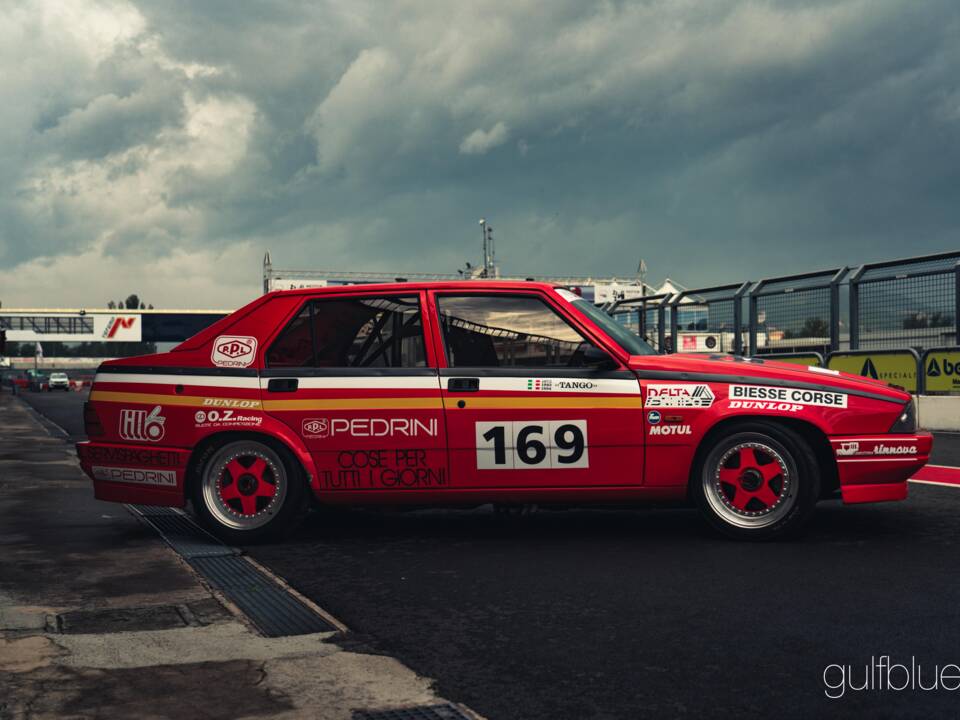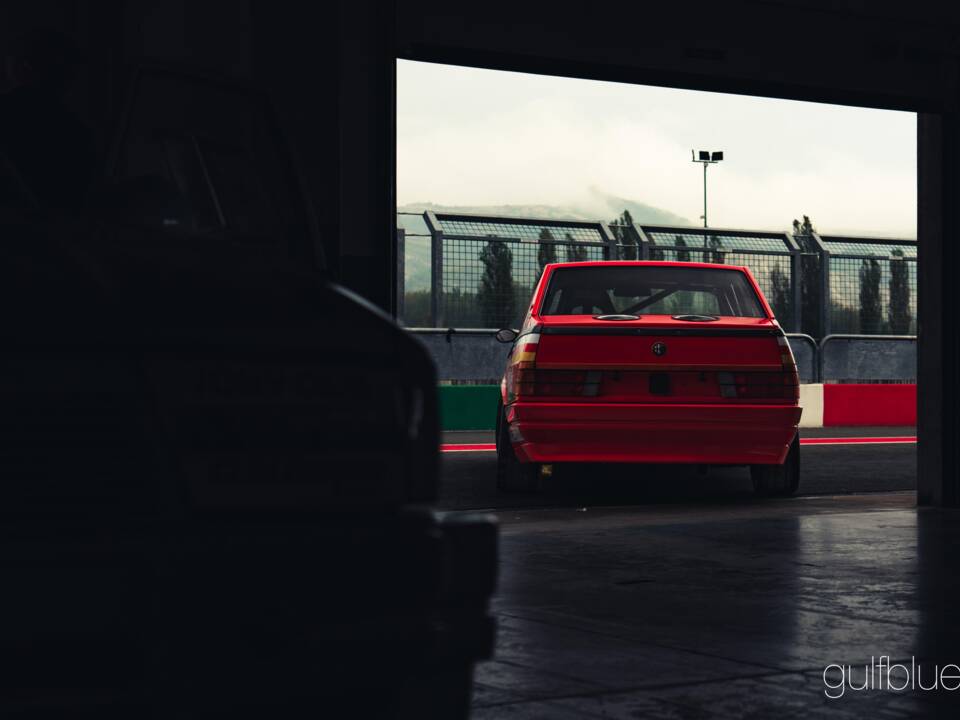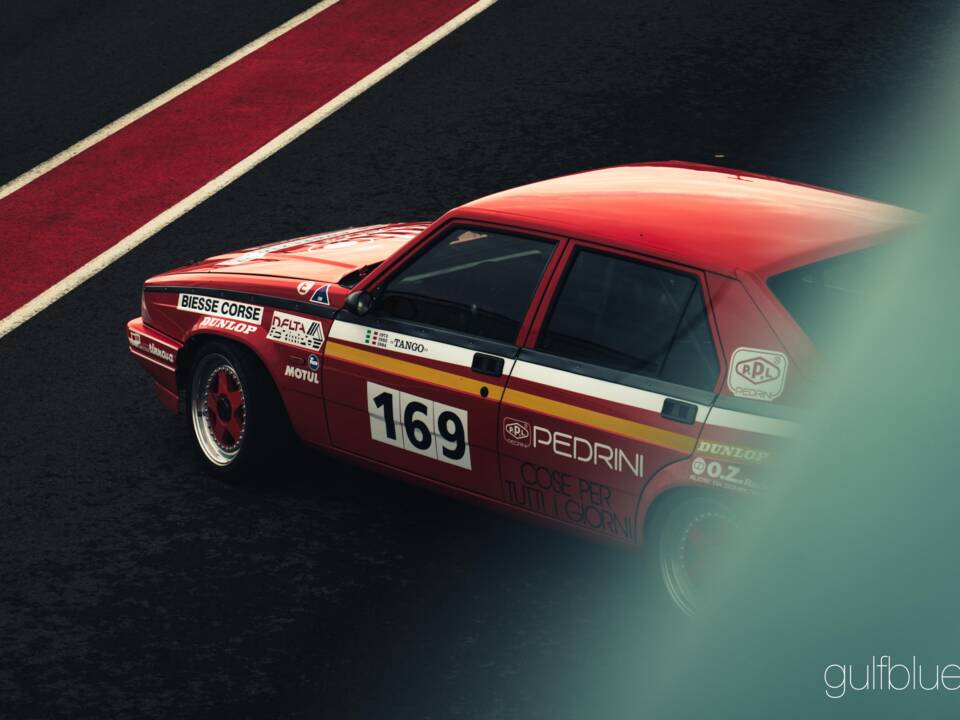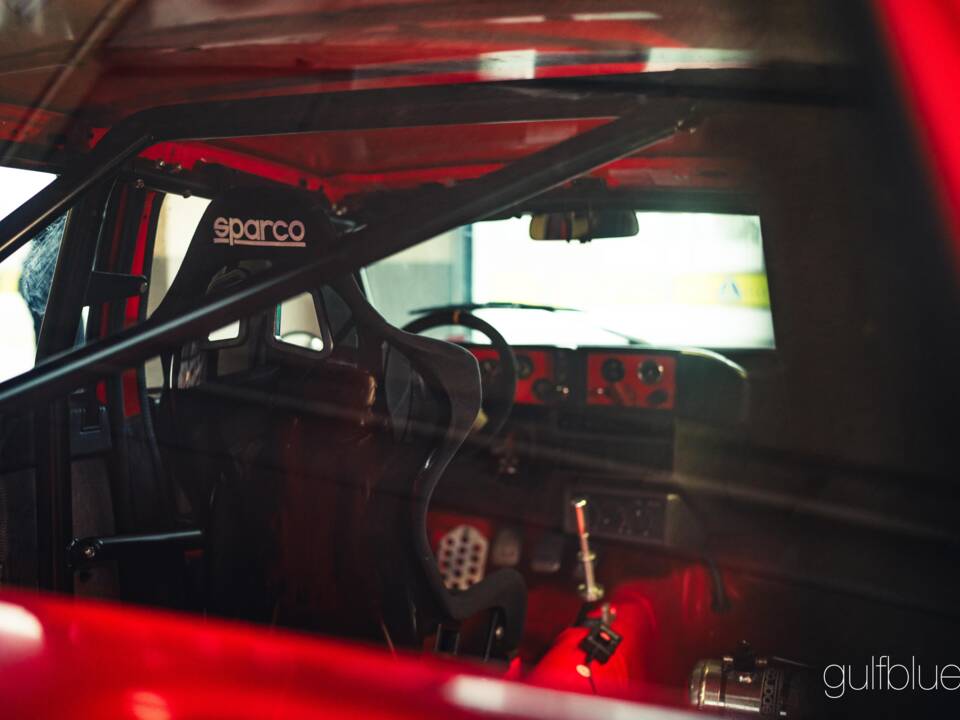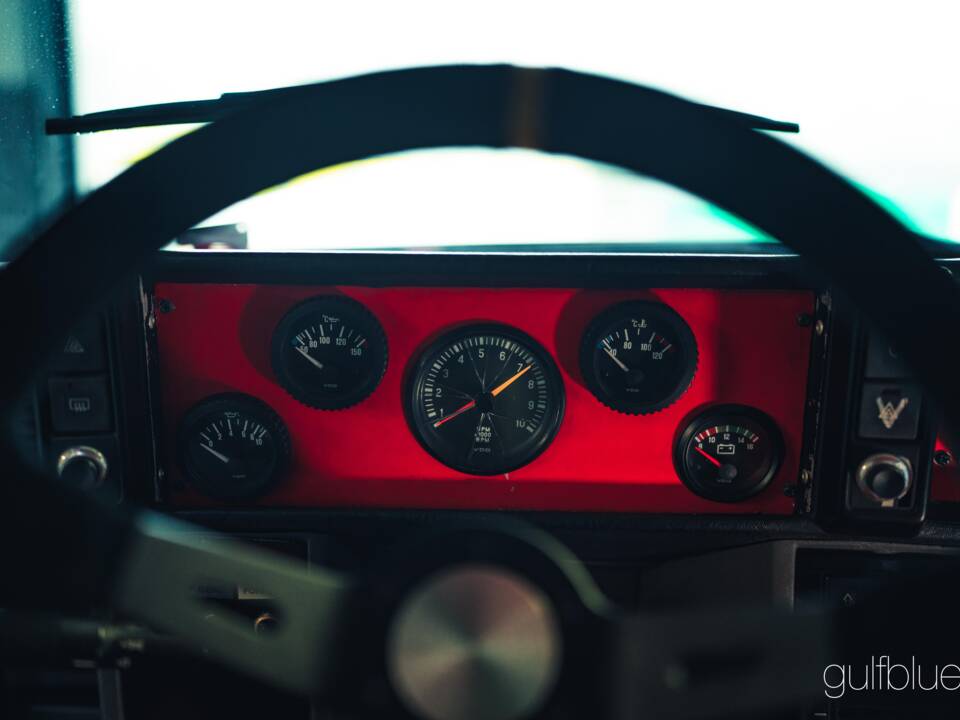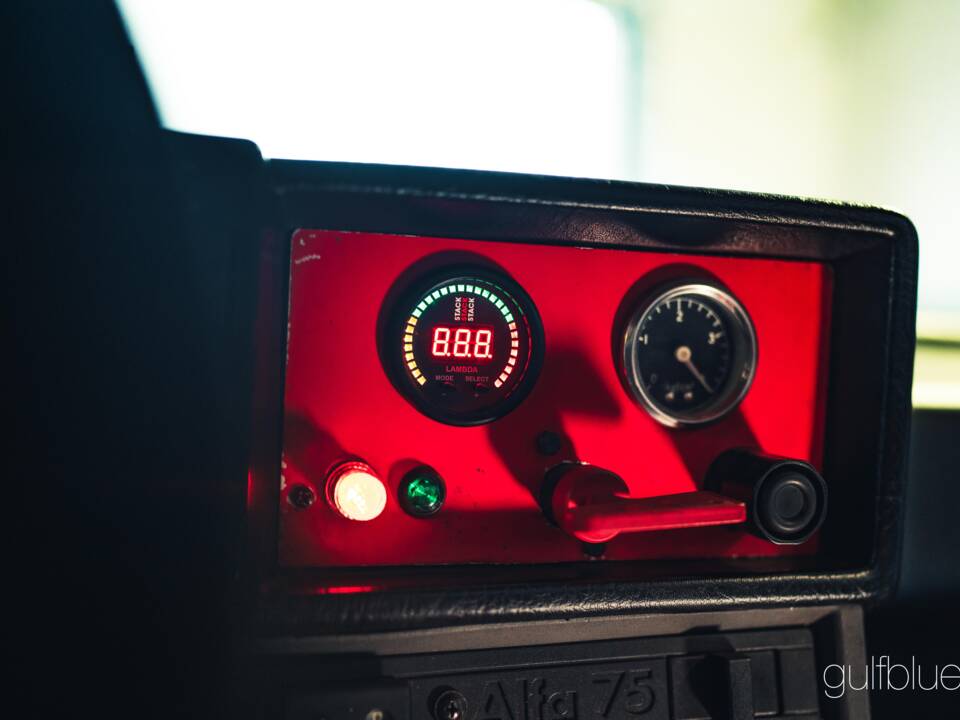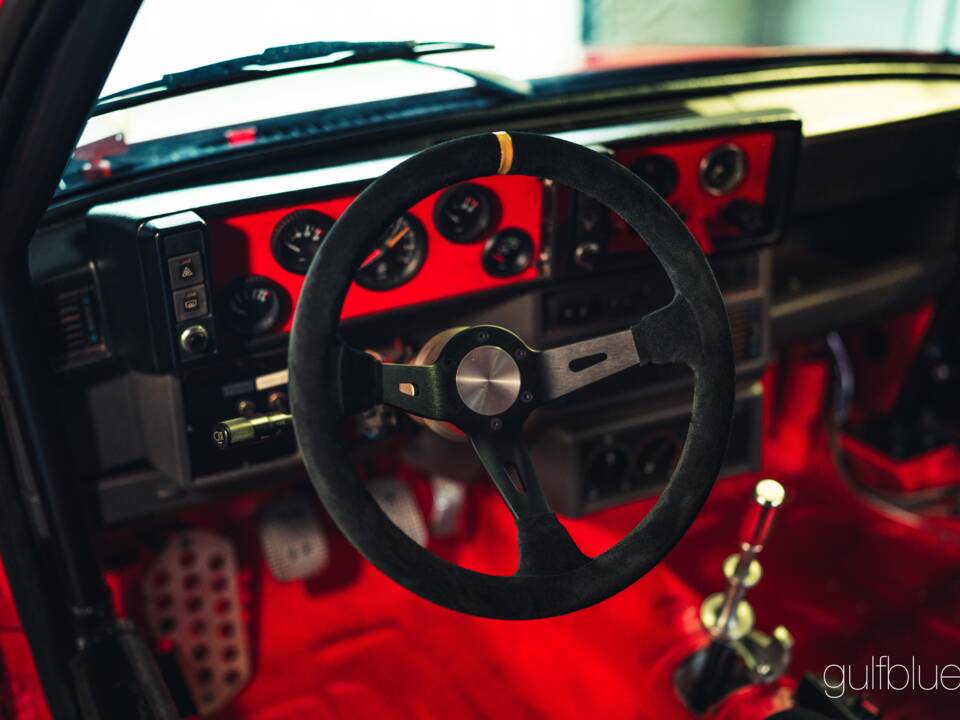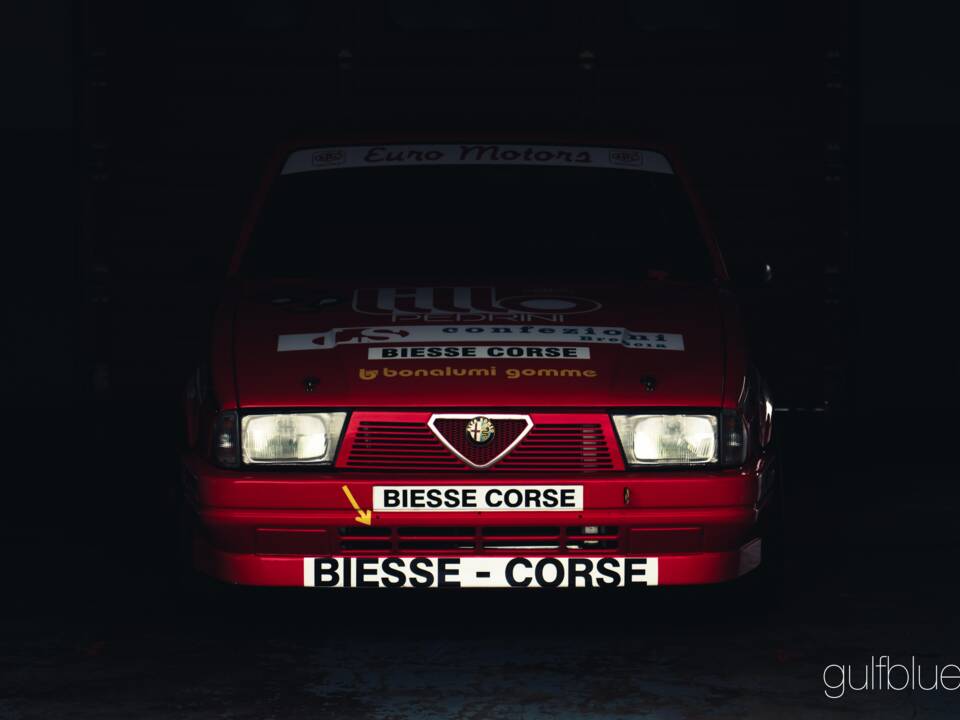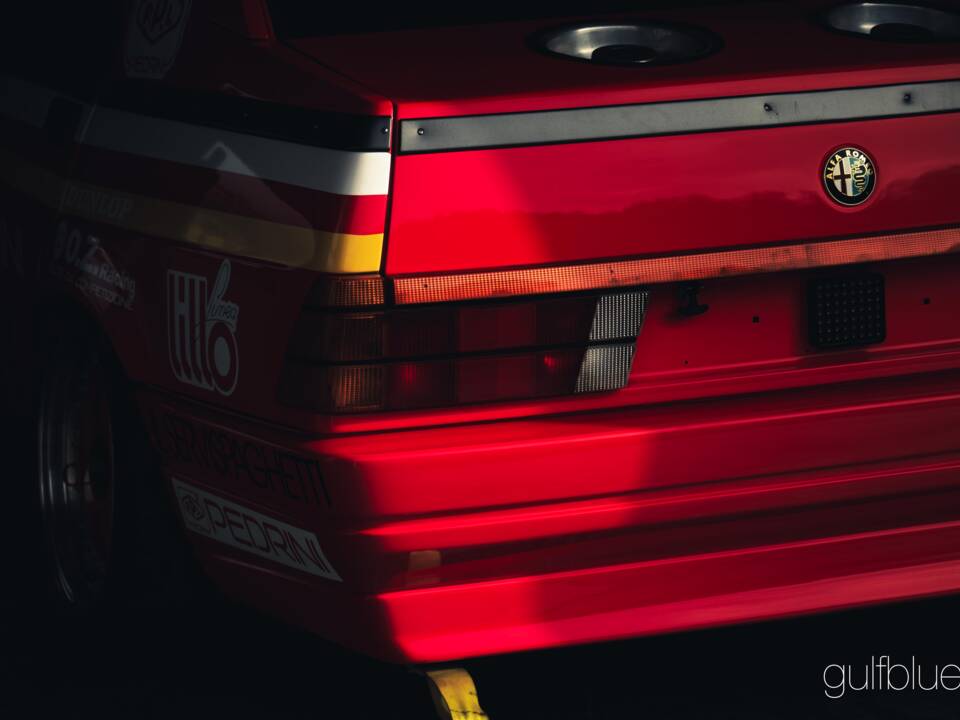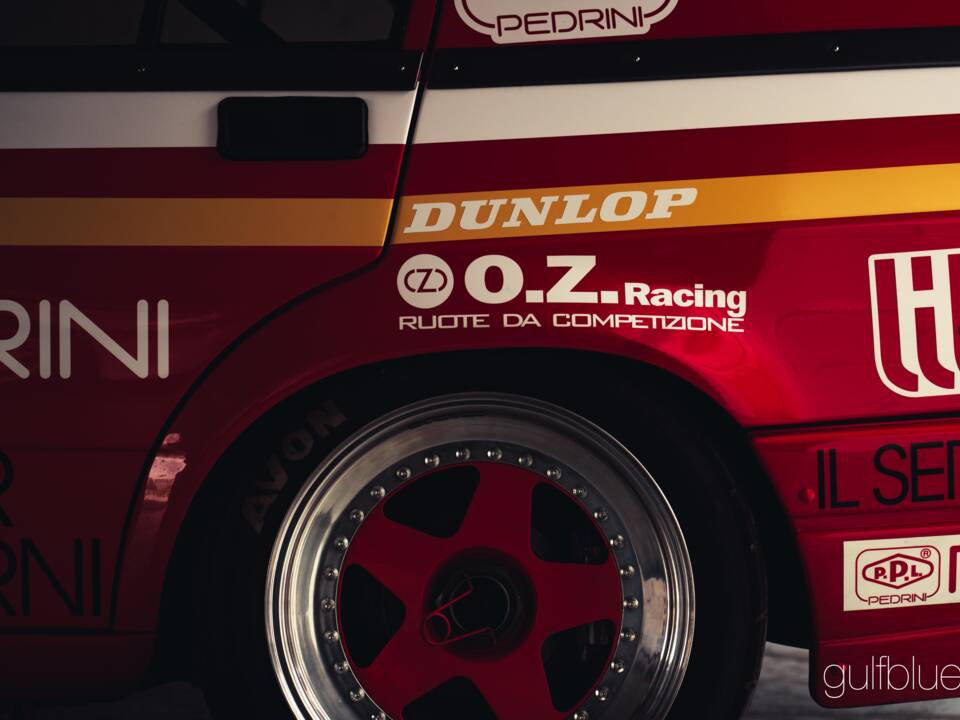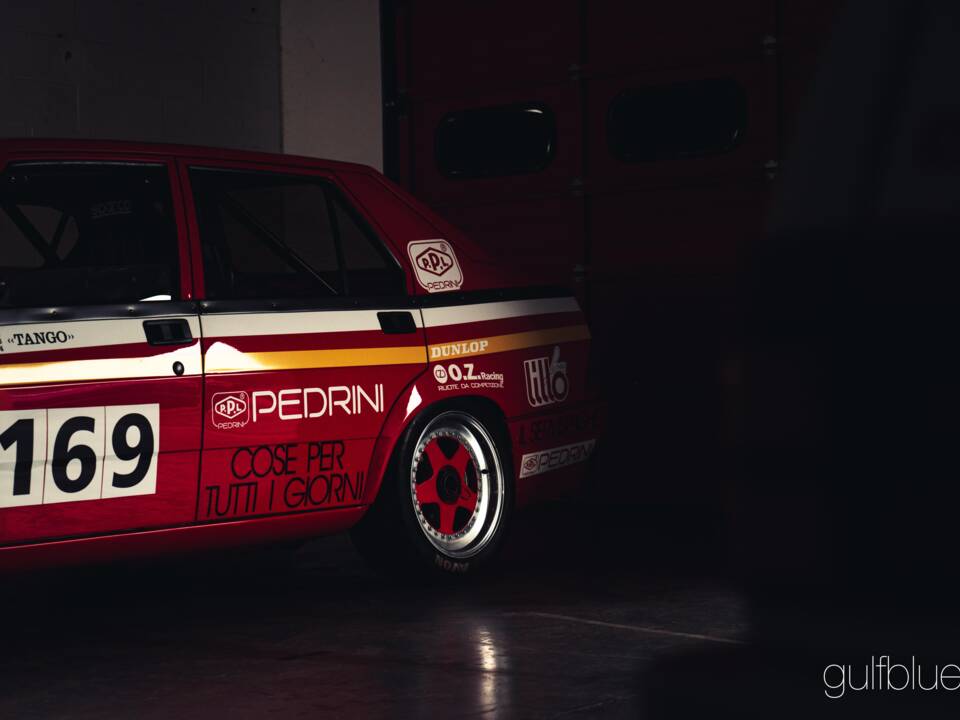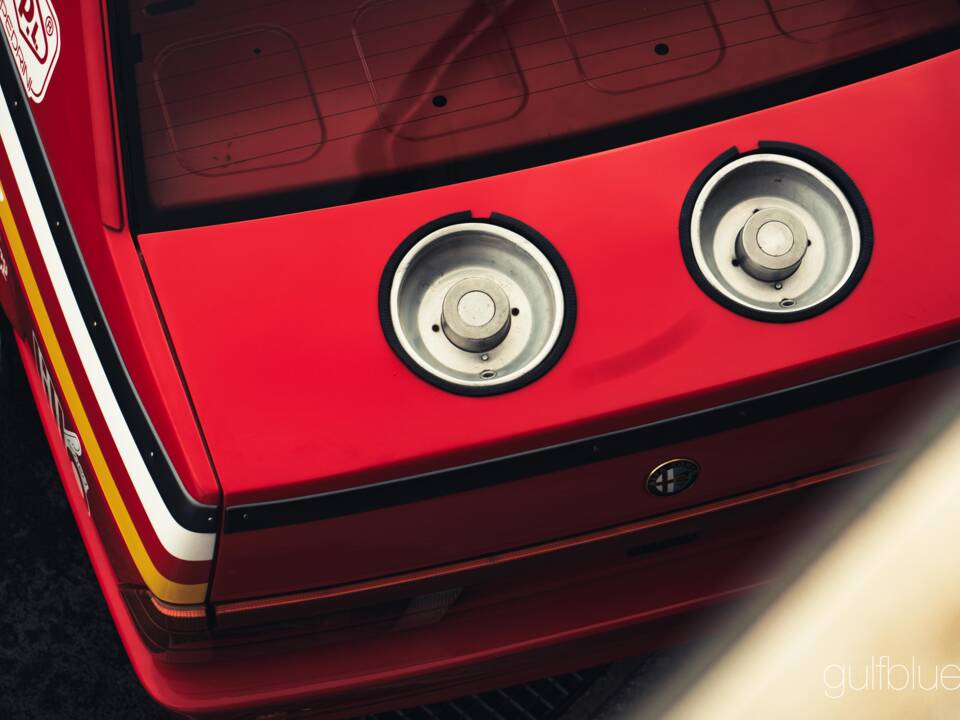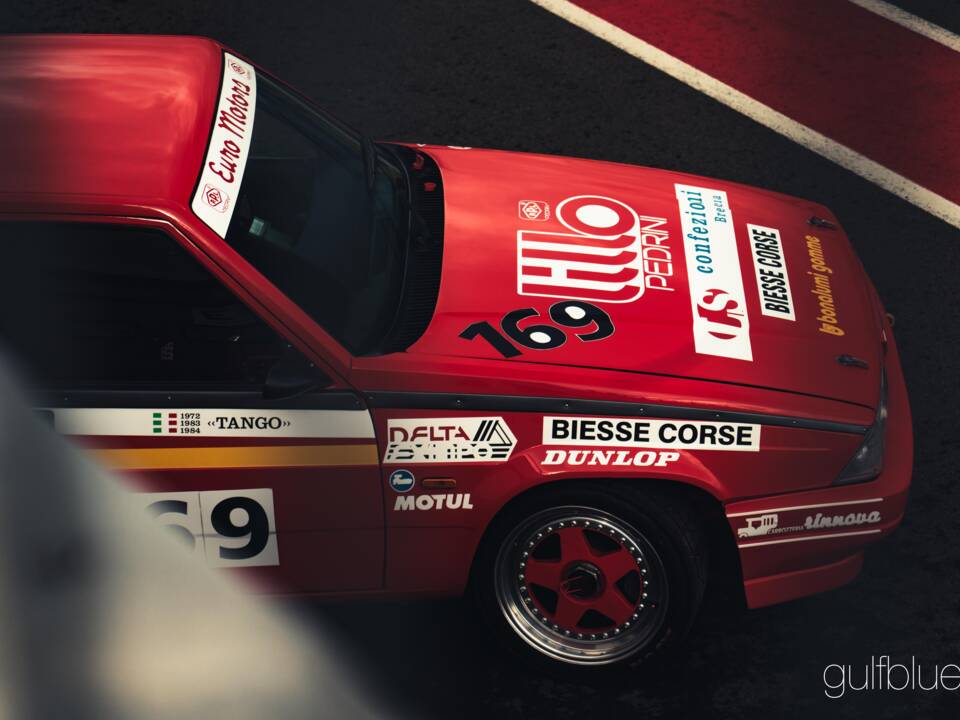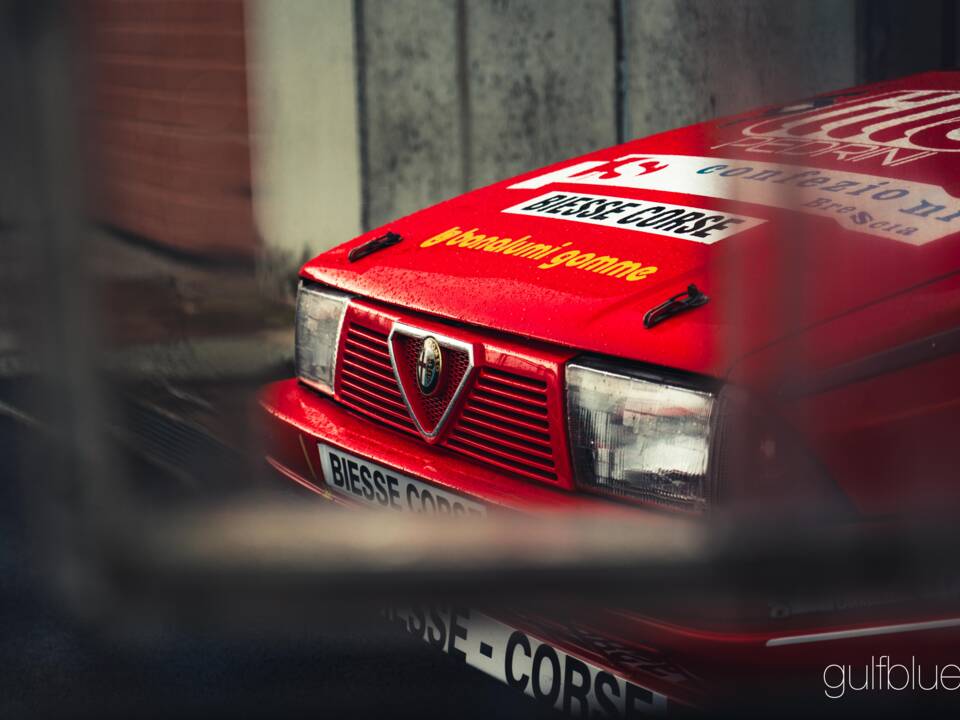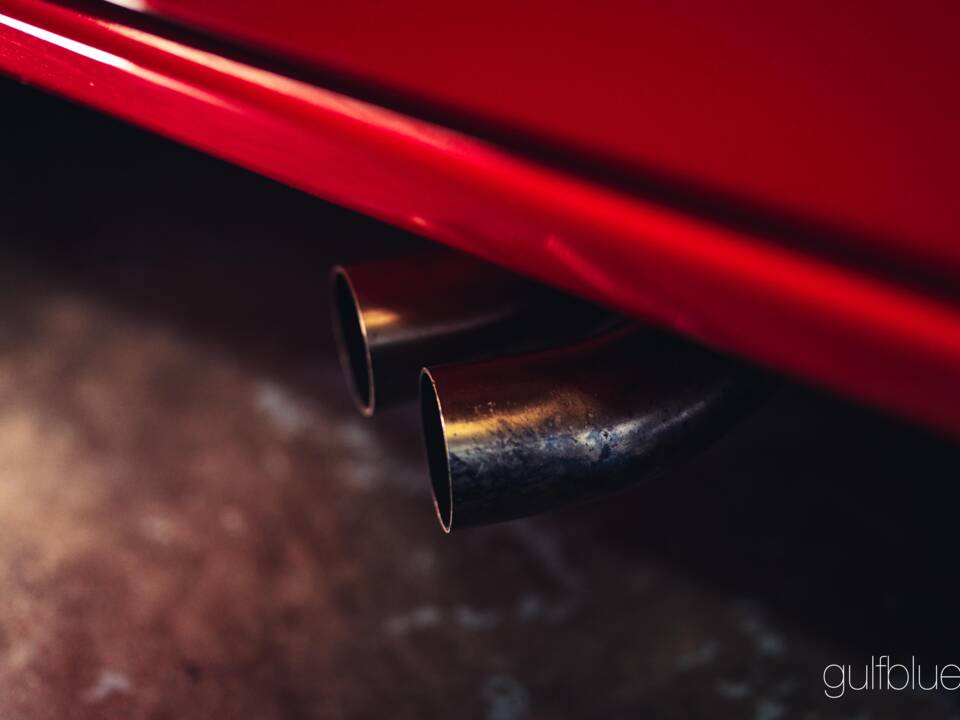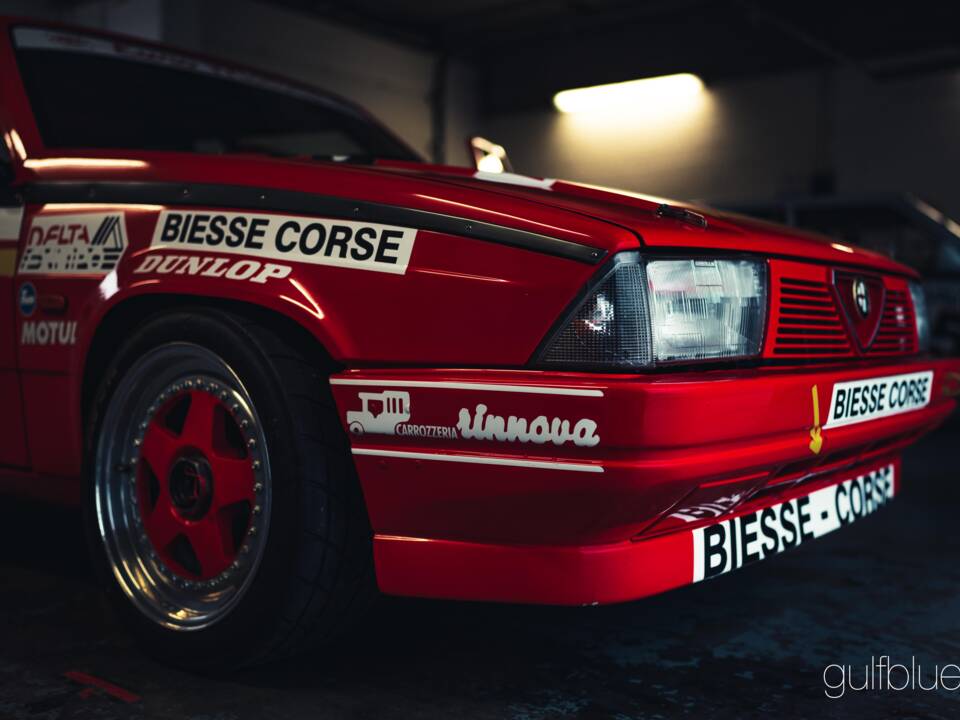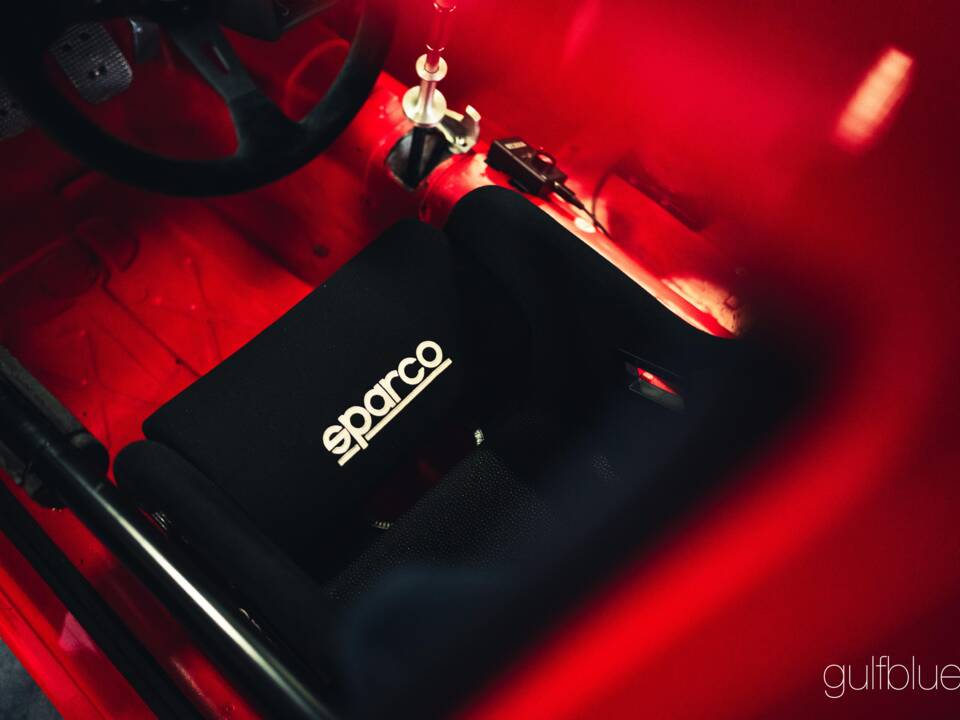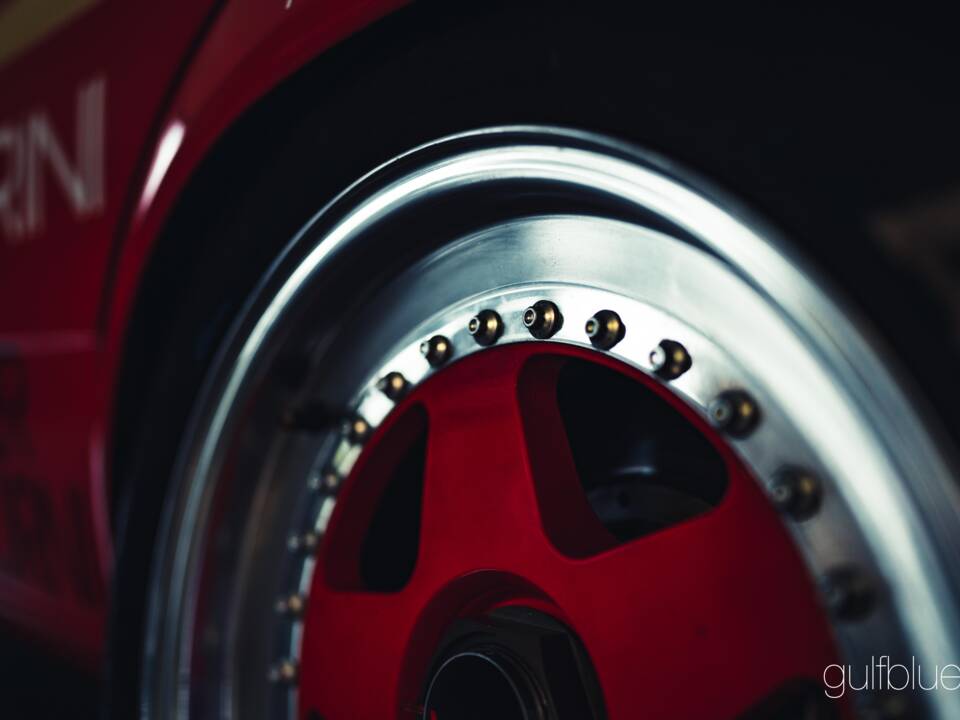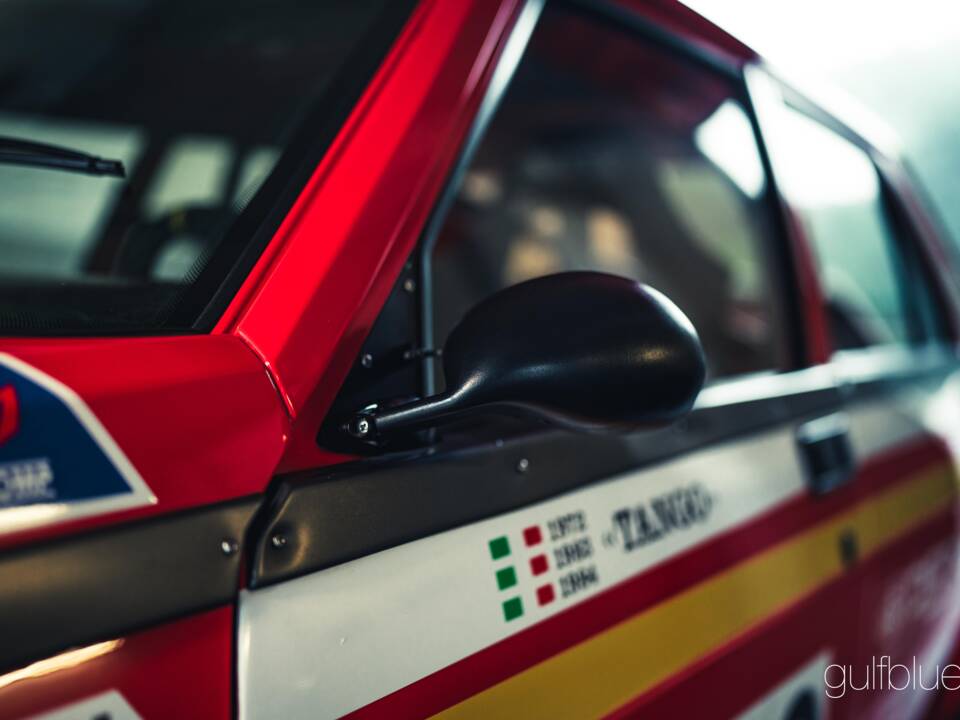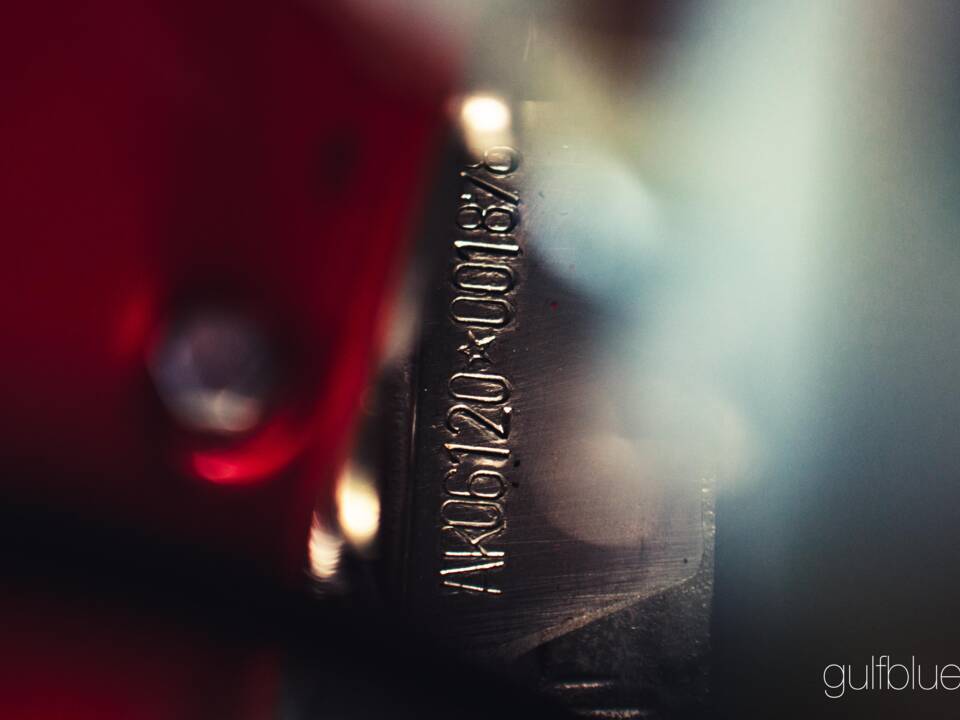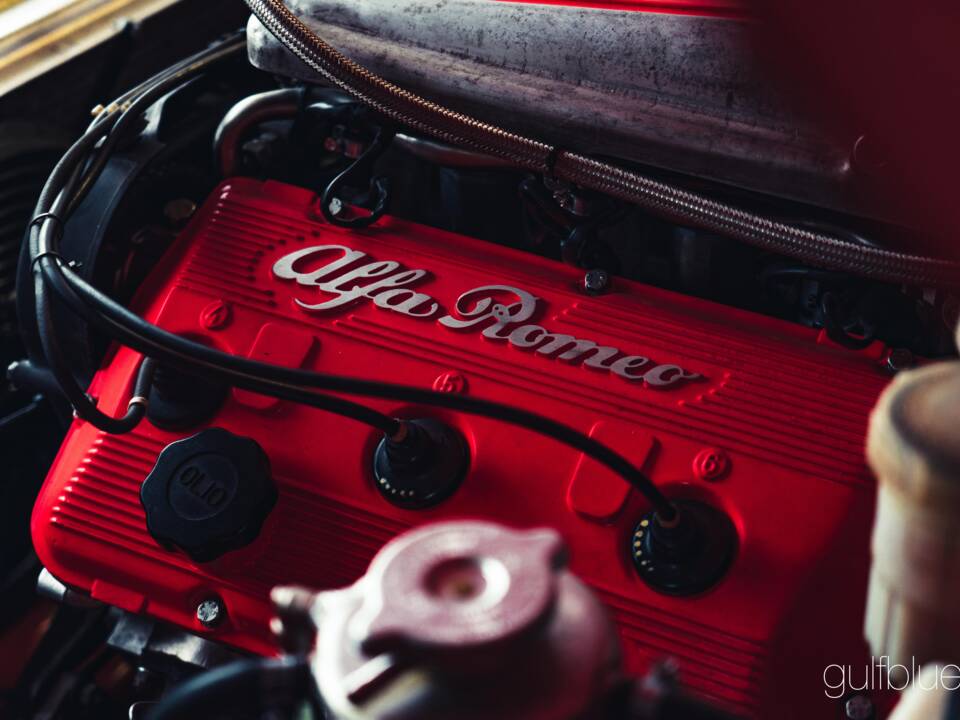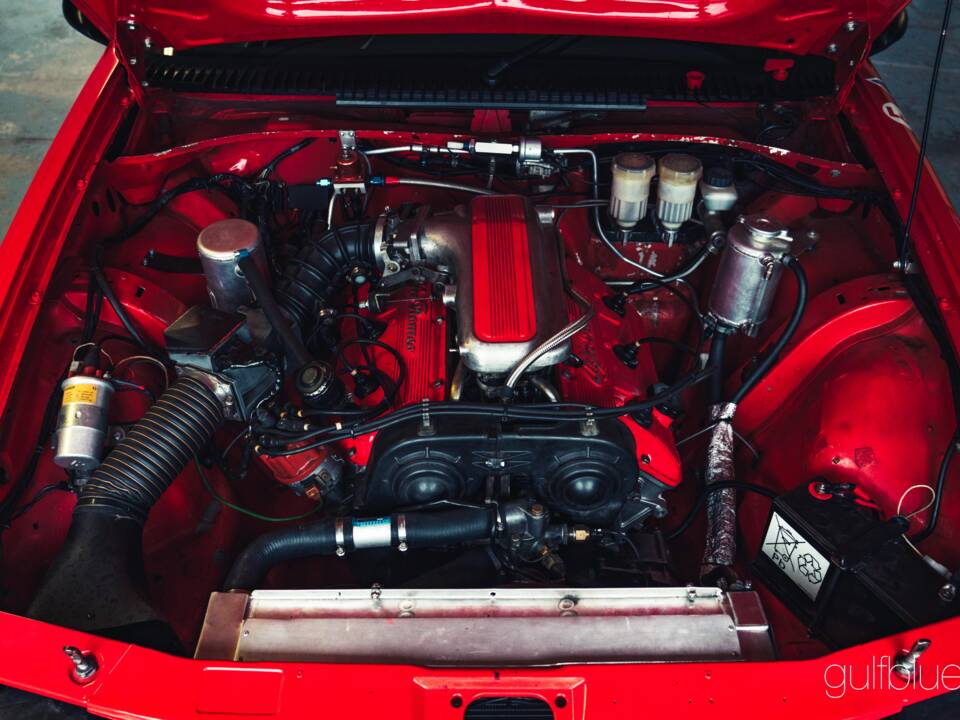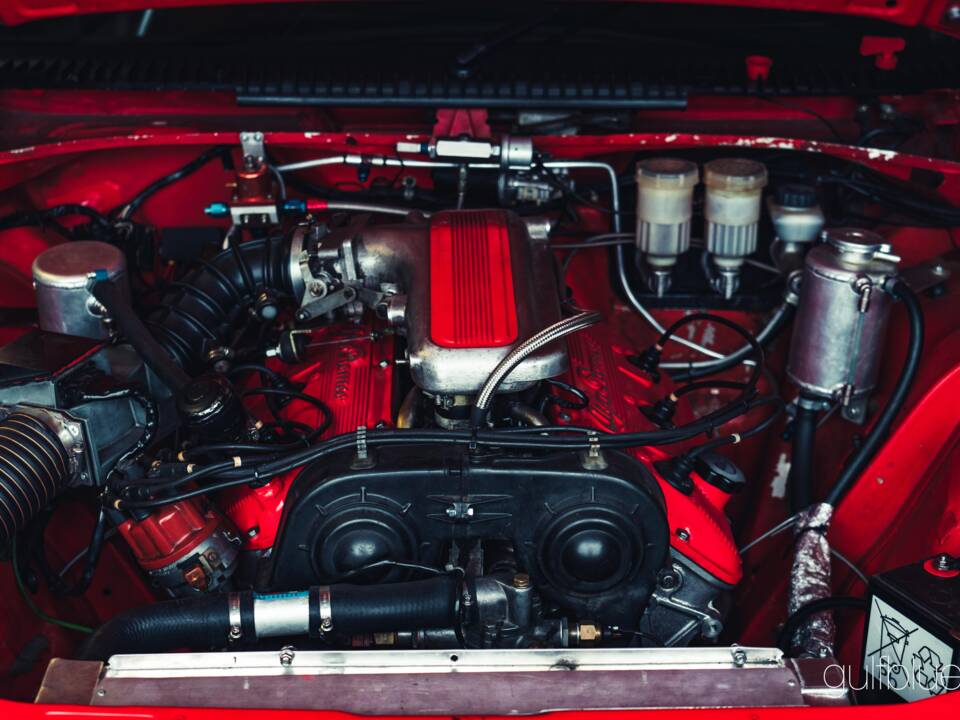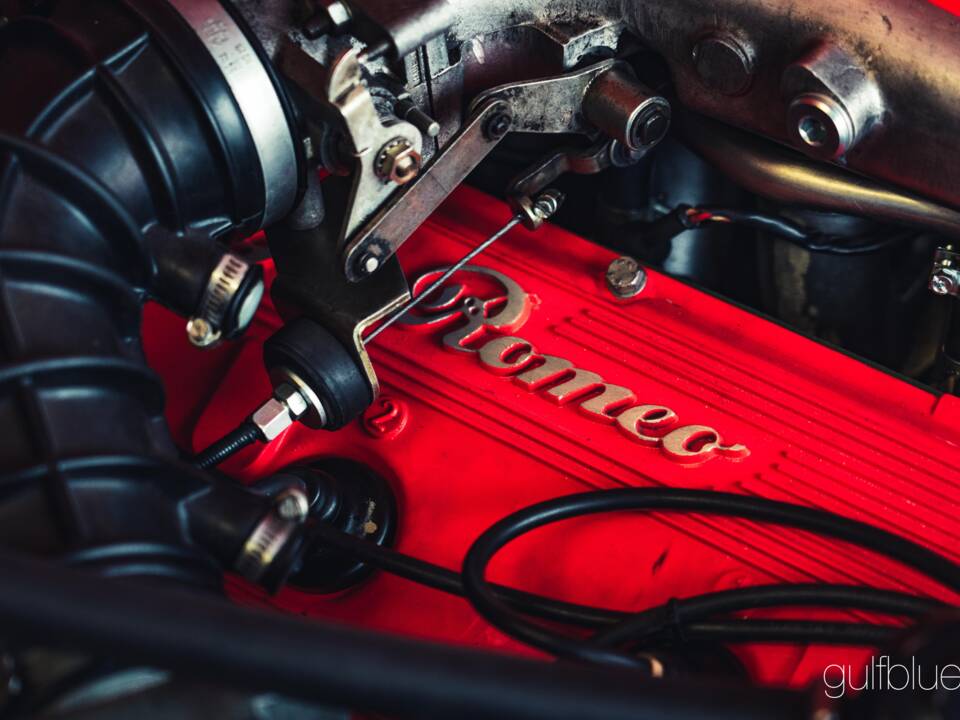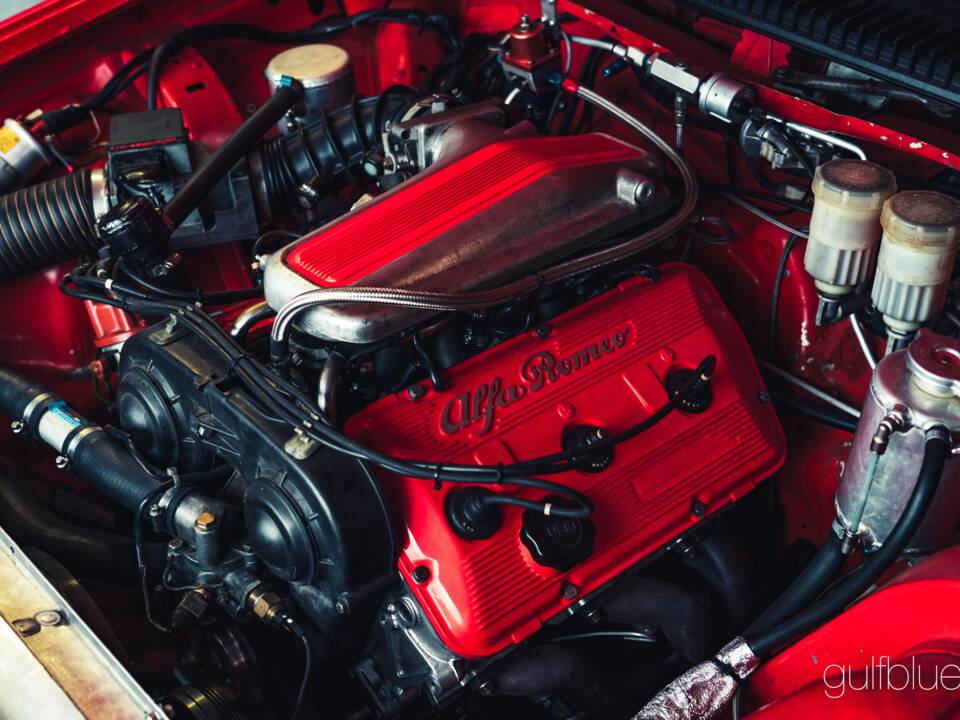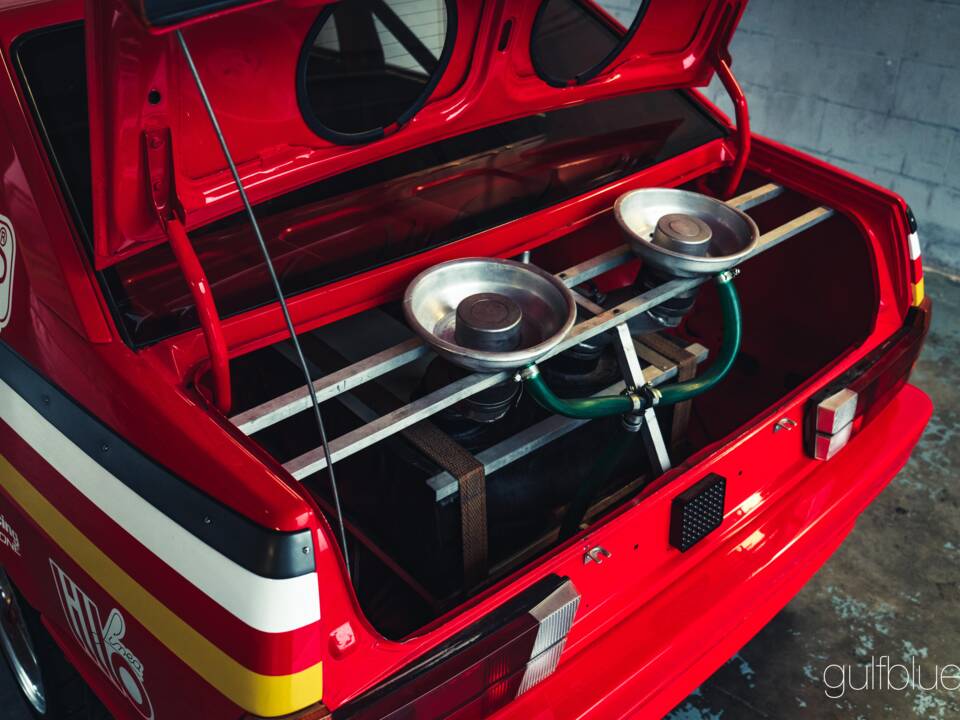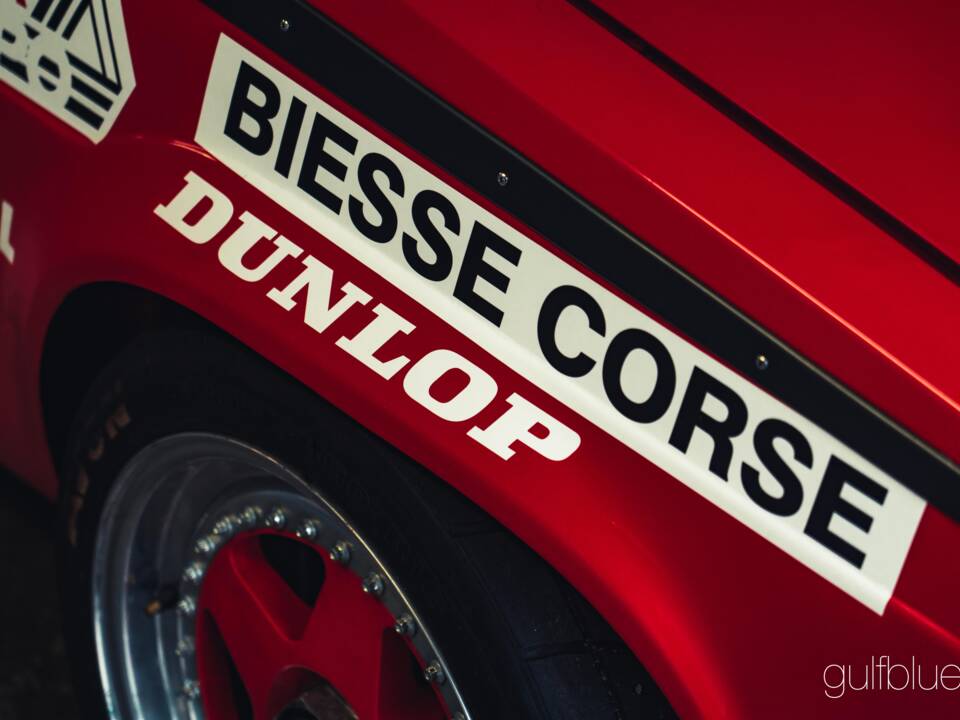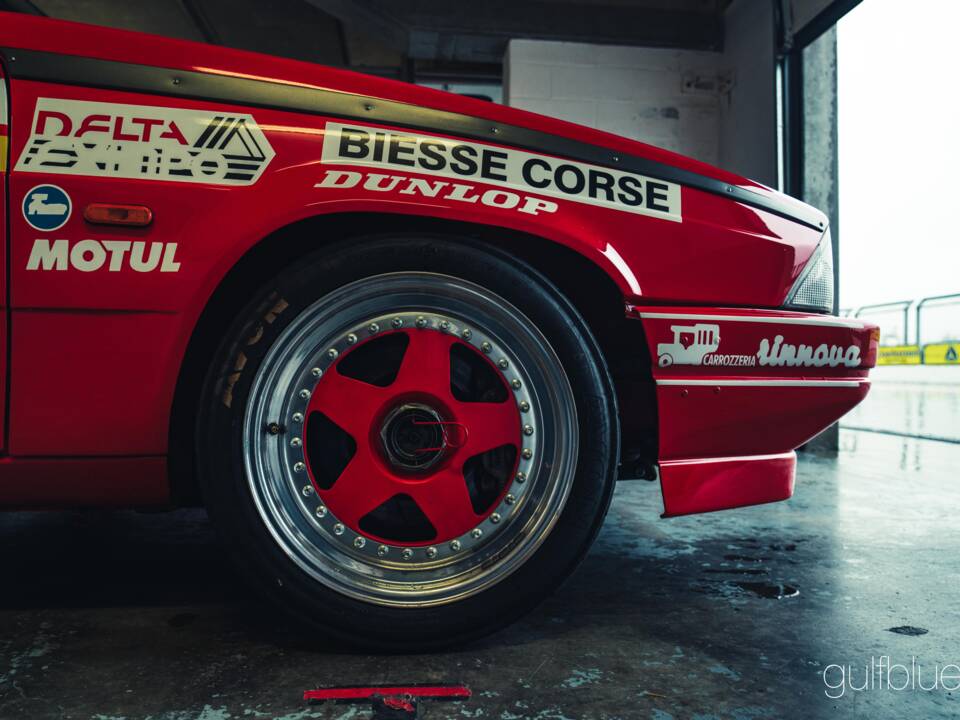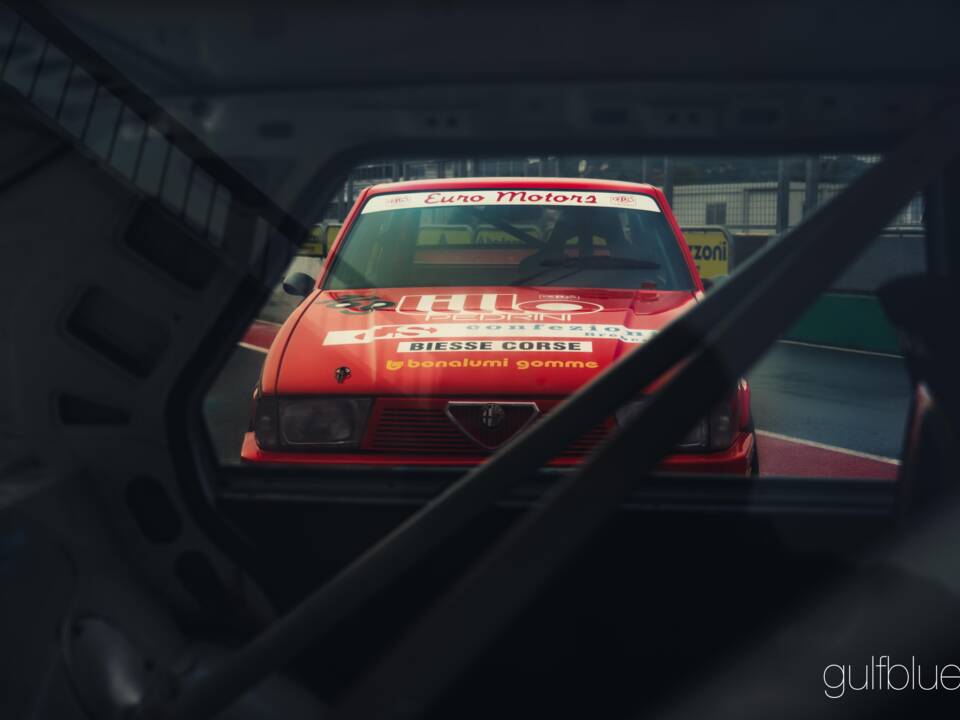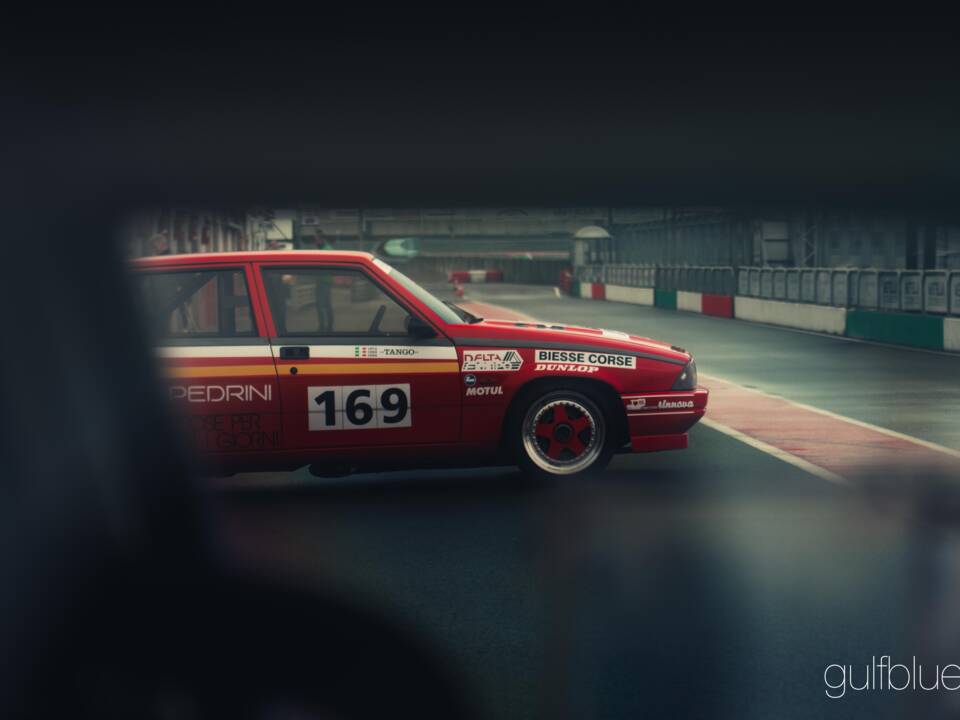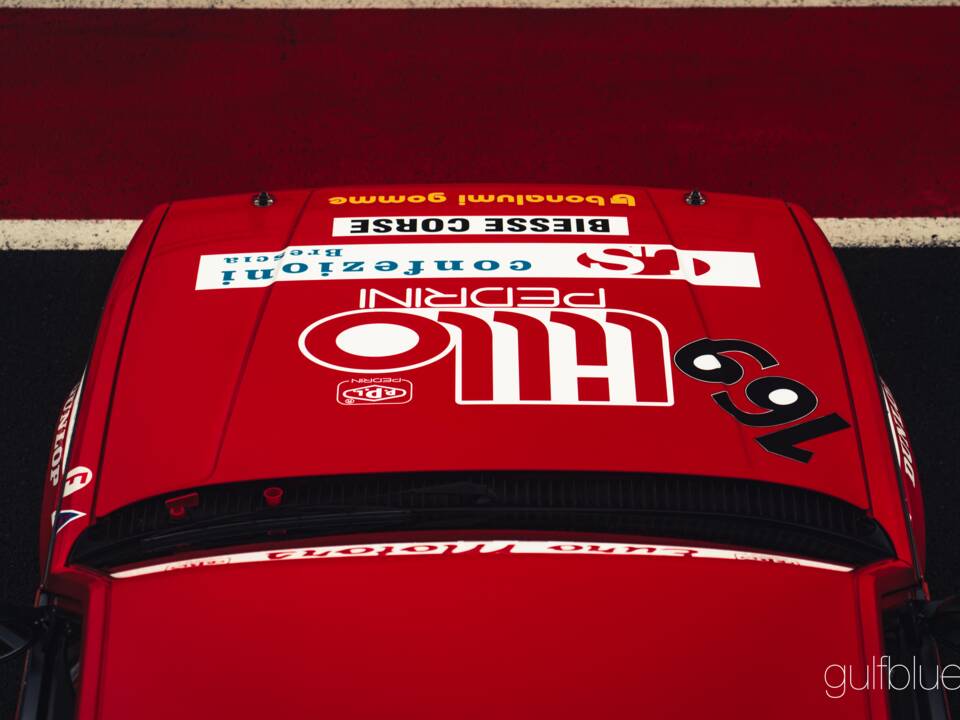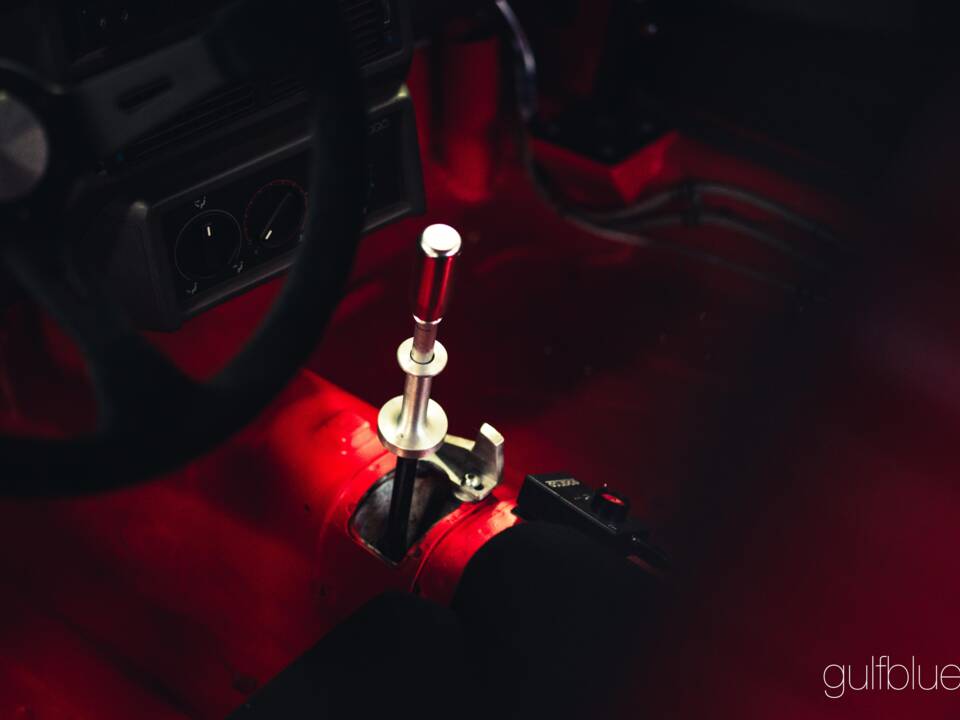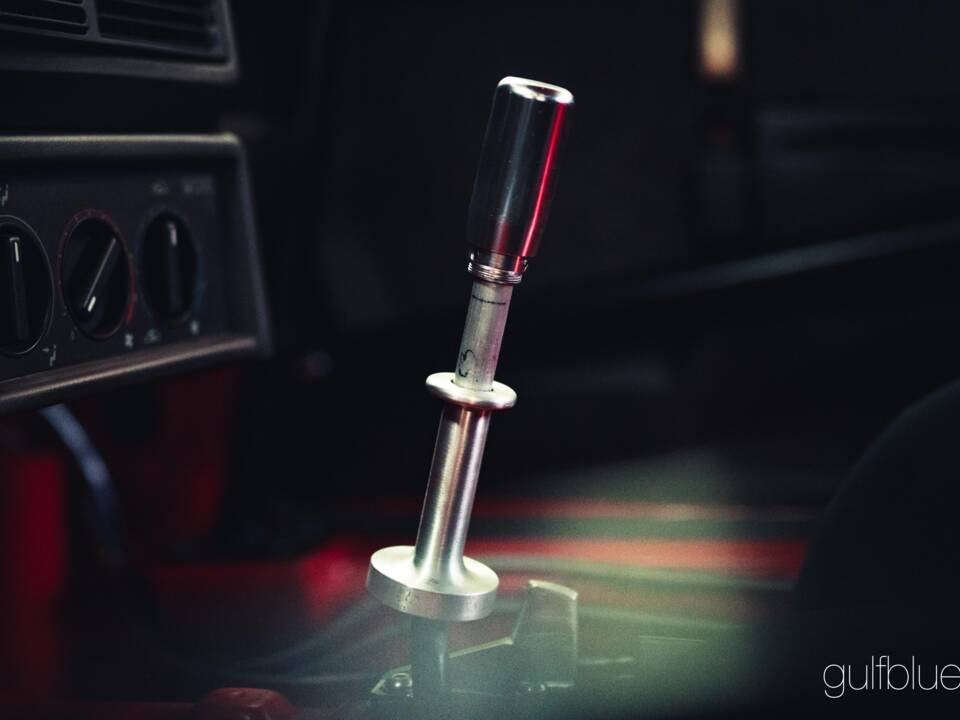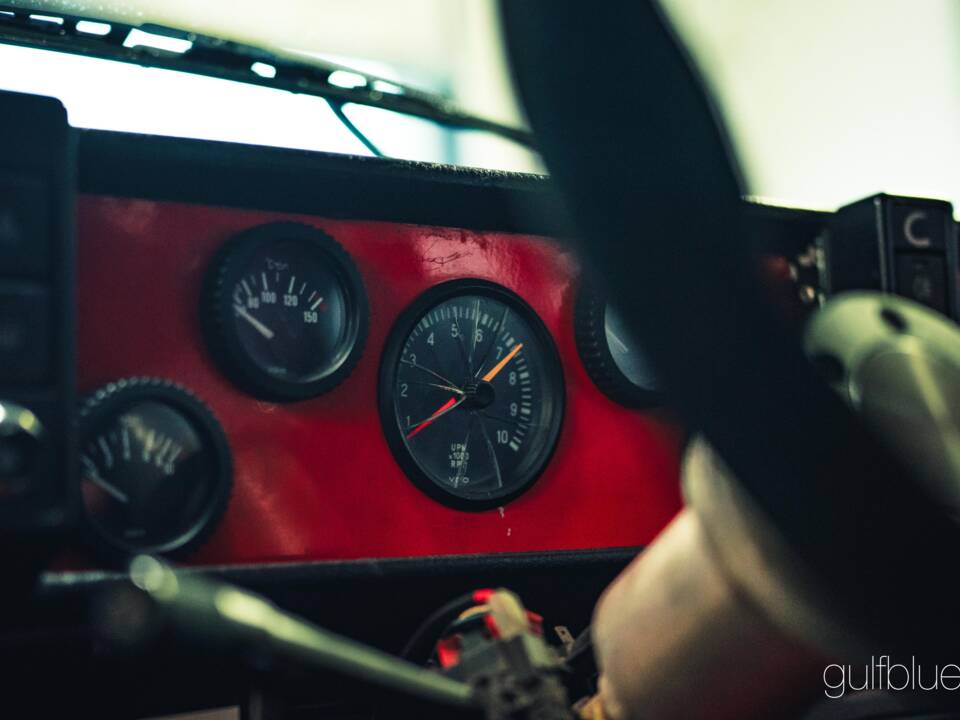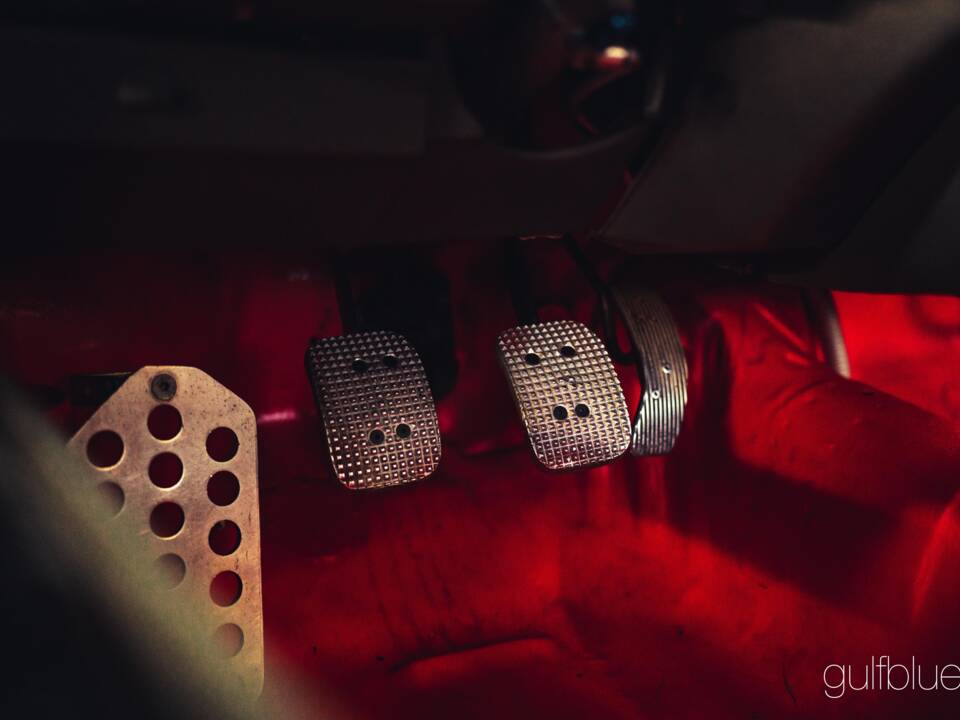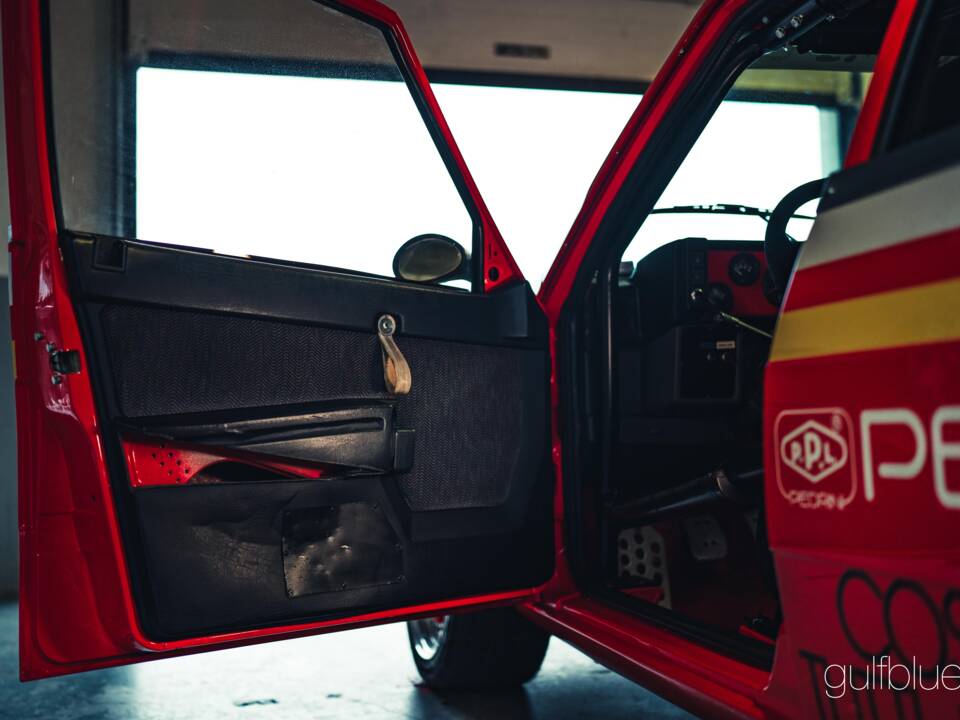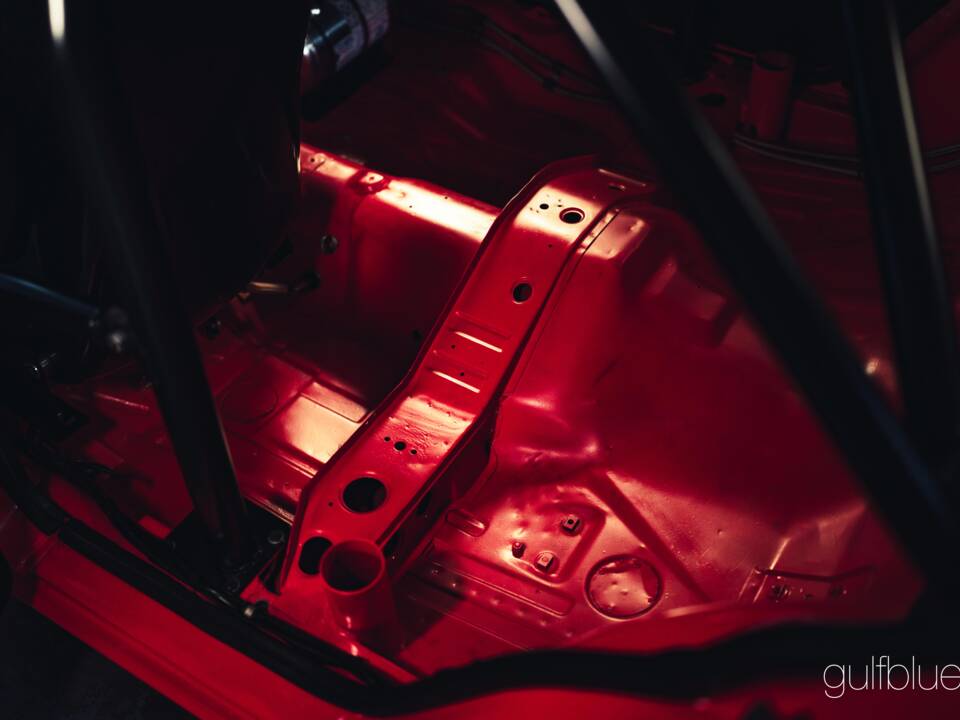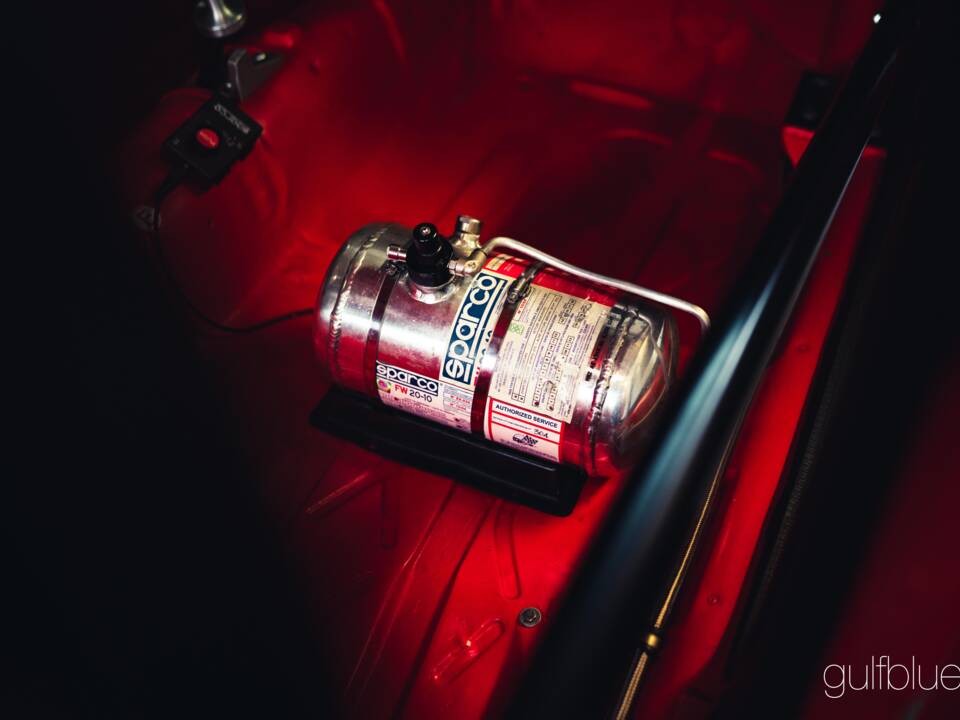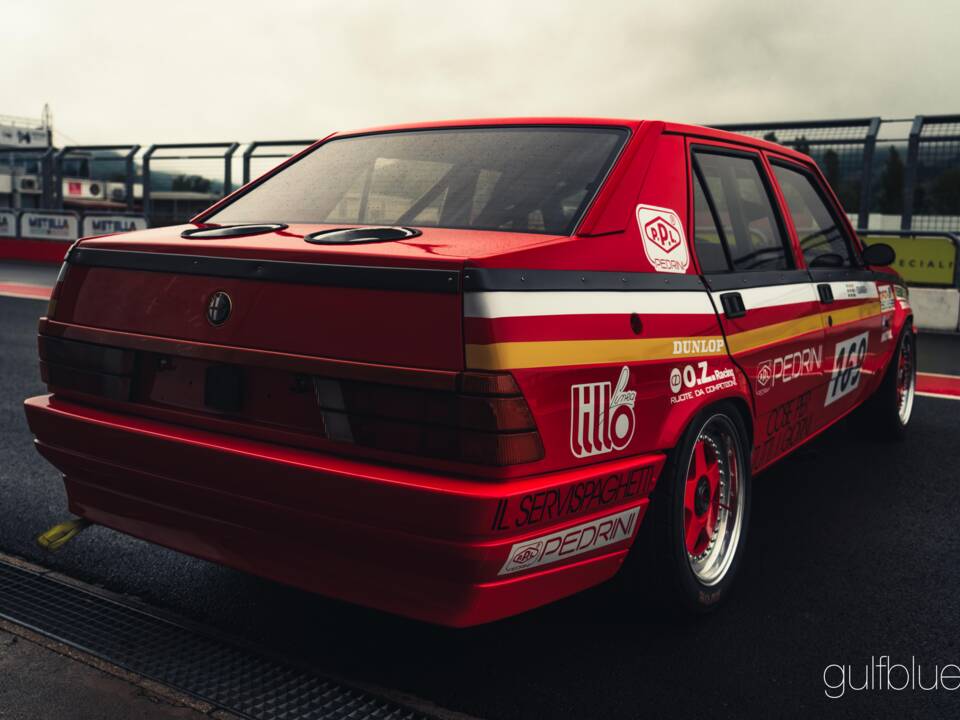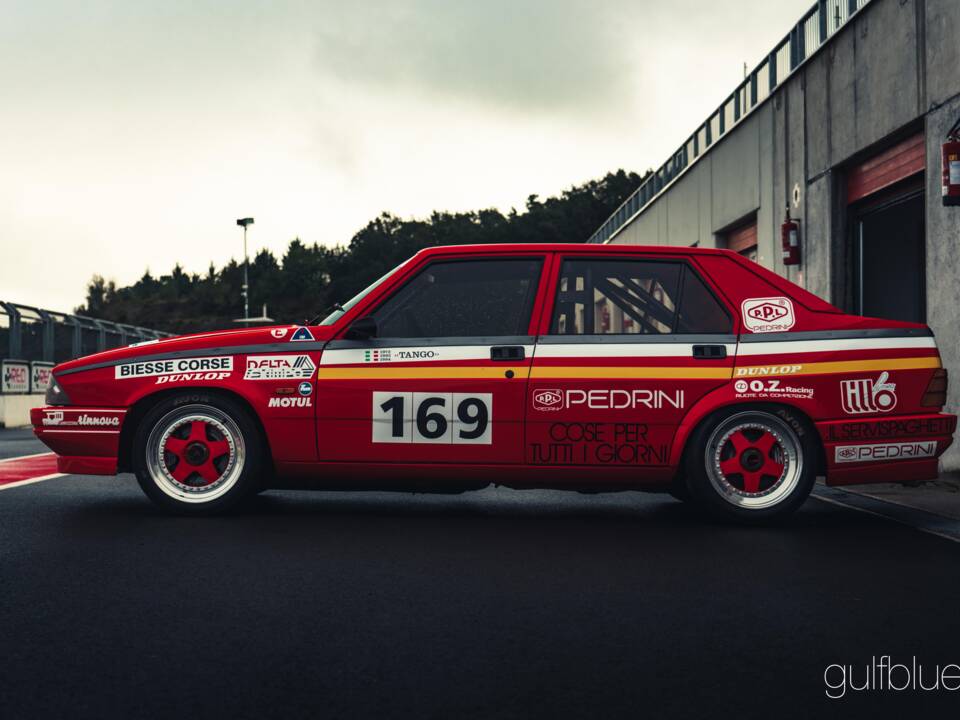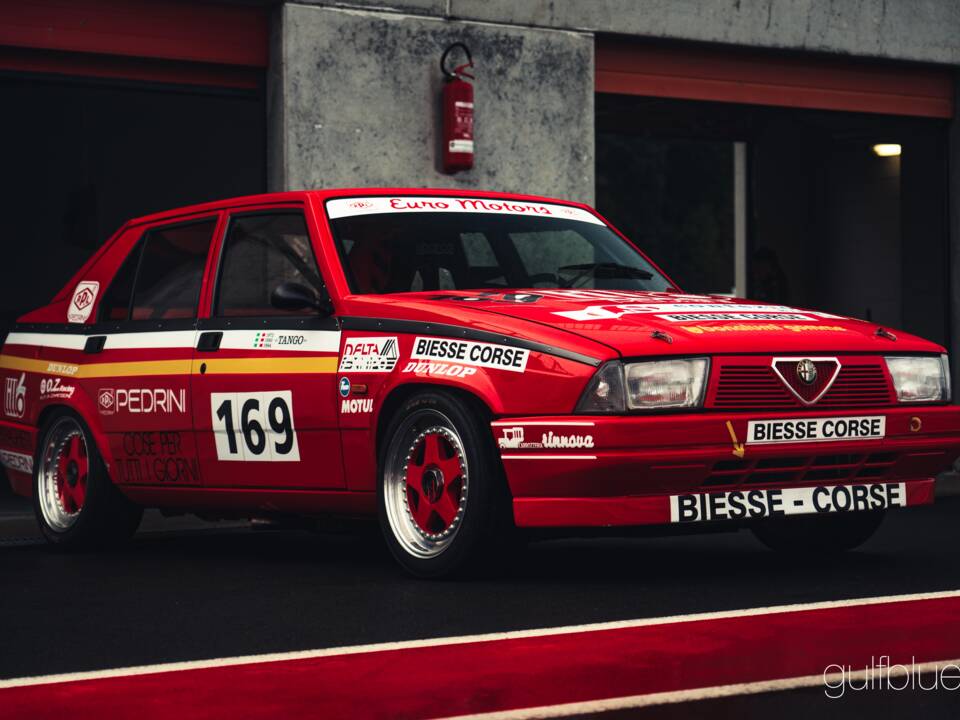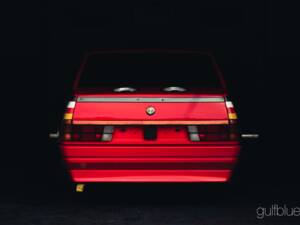1986 | Alfa Romeo 75 2.5 V6
One of the most popular 75 Gr.A in Italy at the time, ready to race, FIA HTP One of the most popular 75 Gr.A in Italy at the time, ready to race, FIA HTP
One of the most popular 75 Gr.A in Italy at the time, ready to race, FIA HTP One of the most popular 75 Gr.A in Italy at the time, ready to race, FIA HTP
One of the most popular 75 Gr.A in Italy at the time, ready to race, FIA HTP One of the most popular 75 Gr.A in Italy at the time, ready to race, FIA HTP
Descripción
This is one of the first bodies produced of the Arese sedan. The driver Abele Tanghetti “Tango”, brought it to its debut in 1986, precisely following its homologation in Group A, alternating it between track and hill climb. The car was prepared and followed by the Brescia-based team BIESSE Corse, linked with the driver for long time: he shared the wheel of a victorious GTV6 of the team with Lella Lombardi and Giorgio Francia, who contributed to Alfa Romeo winning the European constructors' title in 1984.
“Tango”, an Alfa Romeo driver for many years with the Giulia GTA and Alfetta GTV, switched in 1986 to the new saloon 75 where he immediately found a good feeling and fielded it in the CIVT of 1987: he finished the championship in fifth position overall and third in the 2nd division (1600-2500), conquering numerous podiums.
In the following years Tanghetti alternated the 75 with other cars available at BIESSE Corse: the car was used both by Tango and by other drivers in various hill climbs including Malengo-Borno, Cesana-Sestriere and Caprino-Spiazzi, until 1992.
After its first sports career, the car passed into the collection of Gianni Giudici, kept there for years in an absolutely perfect state of conservation until 2018 when GPS Classic undertook a preservative restoration to bring it back to the track in historic competitions.
The V6 engine was completely rebuilt by the expert mechanic Ferlito and all the mechanics were revised, overhauled and updated. Externally, the bodywork was completely repainted, while the aim was to keep the interior as preserved as possible, with the exception of the safety equipment.
Of the original preparation, we still find the beautiful OZ single-nut detachable rims and the 100 liters tank with rapid refueling, installed in the trunk. Since 2019, the car has successfully raced various competitions of the Italian Historic Track Championship.
The car is equipped with FIA HTP and is ready for competitions, complete with various spares, 6 rims and the original side exhaust.
Above a video of our 75 Group A, during some hillclimbs.
The Alfa Romeo 75 in motorsport: Group A, IMSA and Superturismo
The 75 represented, for many years, the last "real" rear-wheel drive Alfa Romeo: it joined the first Giulia GT - the one from the 60s - on the podium of the most competitive and iconic Arese’s touring cars, literally venerated by “Alfaholics”.
It was 1985, the company celebrated its 75th birthday by presenting the heir to the "Nuova Giulietta" born seven years earlier: the 75. The Centro Stile Alfa Romeo directed by Ermanno Cressoni performed the magic of changing the skin of the '77 Giulietta, enhancing its mechanical setup: the aforementioned front engine with rear gearbox and transmission, mounted on the De Dion rigid axle, a bit outdated at the time.
Already in 1986, once the new corporate structure “Alfa-Lancia Industriale” was defined, the company passed under the direction of Fiat and consequently had to stop its commitments in Formula 1. It was therefore possible to concentrate on Touring races, for the happiness of the Alfa fans, but had to deal with rather fierce competition: BMW in particular, with the M3, put a car designed for competition on the road, while all the others were chasing after it by doing the opposite.
Teams and drivers saw a good potential in the newborn 75 and prepared it according to Group A specifications, with the V6 Busso 2500, ideal for fighting German rivals, being able to count on the homologation of larger brakes, various gear ratios, body reinforcements and various improvements in the suspensions.
In the Arese factory, instead, the Turbo Evoluzione was developed, based on the version with the 4-cylinder engine, developed specifically for competitions and produced in 500 road units, the minimum necessary for approval in IMSA and Superturismo. In 1987, Alfa Corse, under the direction of Giorgio Pianta, invented the 75 IMSA to be able to race in the IMSA (International Motor Sport Association) championship, developed by the engineer Gianni Tonti to race in the second division (equivalent displacement up to 2.5 liters): after just one year the world championship series disappeared and continued in the European and various national touring championships, which were in great shape at the time. The 75 raced with success driven by great drivers, splitted between Formula 1 and touring competitions, such as Alessandro Nannini, Nicola Larini and Gianni Morbidelli.
Among the most interesting competitions reserved for cars derived from the series, there is the Giro d'Italia: in 1988, the Giro sees Alfa Romeo enter three 75 turbo Evoluzione in IMSA configuration driven by Patrese/Biasion/Siviero, Larini/Cerrato/Cerri and Nannini/Loubet/Andrié, respectively first, second and third. The all-Alfa Romeo podium is repeated in 1989, again with the official 75s.
Compared to the car in road car, the Alfa Romeo 75 Turbo Evoluzione set up for these competitions has a further lightened and strengthened body, and to improve precision and rigidity the connecting elements between the body and mechanical parts are replaced by uniball. The inboard brakes of the road version have been positioned on the wheels, in a more conventional position; like the rear axle, the front was also modified and included springs to support the work of the torsion bars.
To fit into the class up to 3000, the engine displacement was reduced from 1779 to 1762 (multiplied by 1.7 as it was supercharged), a capacity recovered by the enormous Garrett turbine with an output from 370 to over 400 horsepower in the latter evolutions. The power was put to the tarmac by the 17” wheels and thanks to the 5-speed dogbox produced by Brena, a masterpiece of technology that nevertheless requires experience in use.
The even more extreme IMSA car features further variations compared to the one seen in the CIVT (Italian Speed Touring Championship) first and then in the Superturismo: in particular, we see widened fenders by a further 100mm to accommodate the wider wheels, new front and rear spoilers, bonnets and fenders in composit material. Weight? With this diet, the needle on the scale stopped just under 1000kg.
Further details on www.gulfblue.it
Detalles del vehículo
Datos del vehículo
- Marca
- Alfa Romeo
- Serie del modelo
- 75
- Modelo
- 75 2.5 V6
- Primera fecha de registro
- No provisto
- Año de construcción
- 1986
- Kilometraje (leer)
- Número de chasis
- No provisto
- Número de motor
- No provisto
- Número de la caja de cambios
- No provisto
- Coincidencia de números
- No provisto
- Número de propietarios
- No provisto
Detalles técnicos
- Carrocería
- Berlina (Saloon)
- Potencia (kW/CV)
- 184/250 (Fábrica: 115/156)
- Capacidad cúbica (cm³)
- 2500
- Cilindro
- 6
- Puertas
- No provisto
- Manejo
- Izquierda
- Caja de cambios
- Manual
- Marchas
- No provisto
- Engranaje
- Trasero
- Freno delantero
- No provisto
- Freno trasero
- No provisto
- Combustible
- Gasolina
Configuración individual
- Color exterior
- Rojo
- Color interior
- Otros
- Material interior
- Otros
Condición, registro y documentación.
- Tiene peritaje
- No provisto
- Condición
- Informe de inspección del libro
- Matriculado
- Listo para conducir
- FIA
